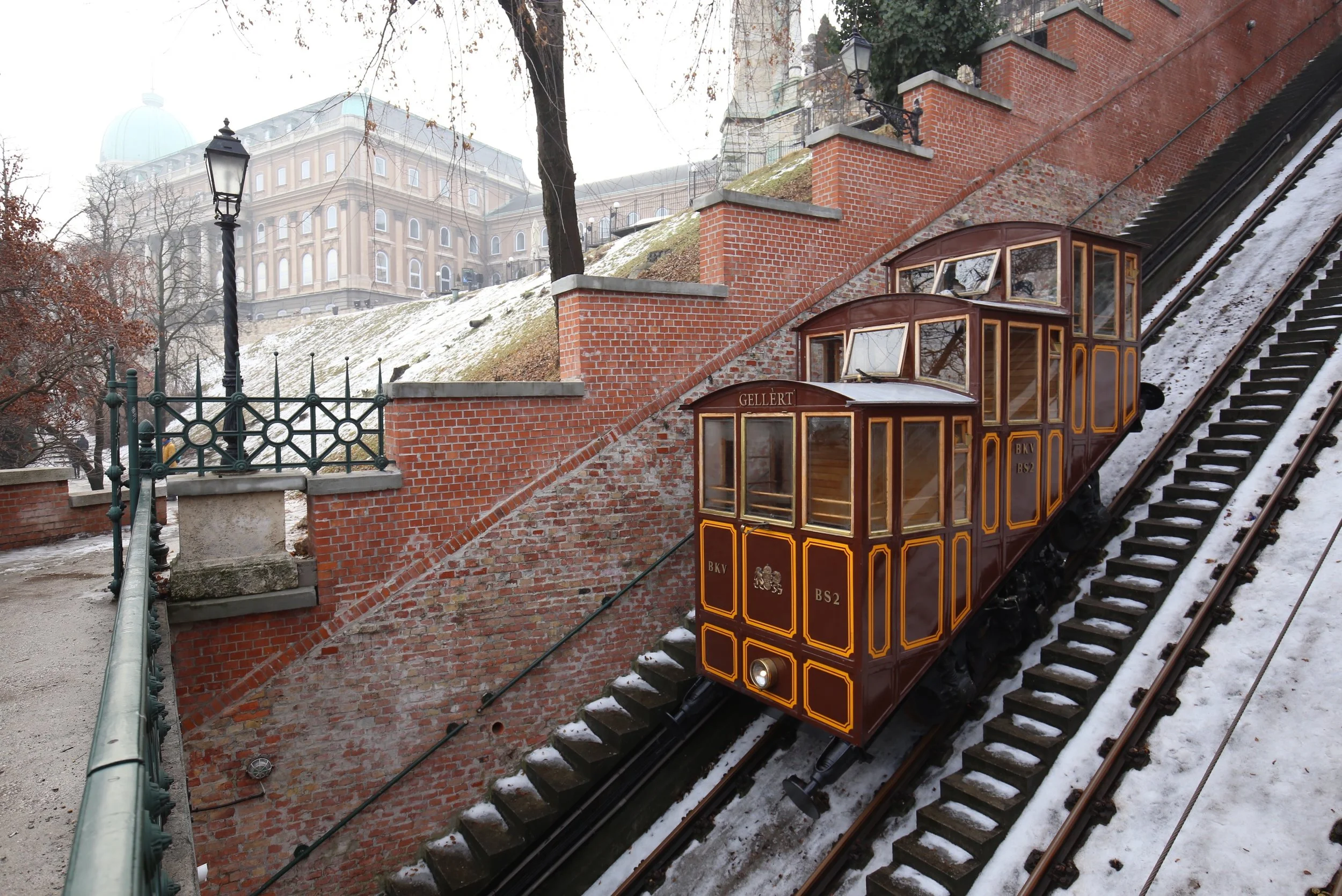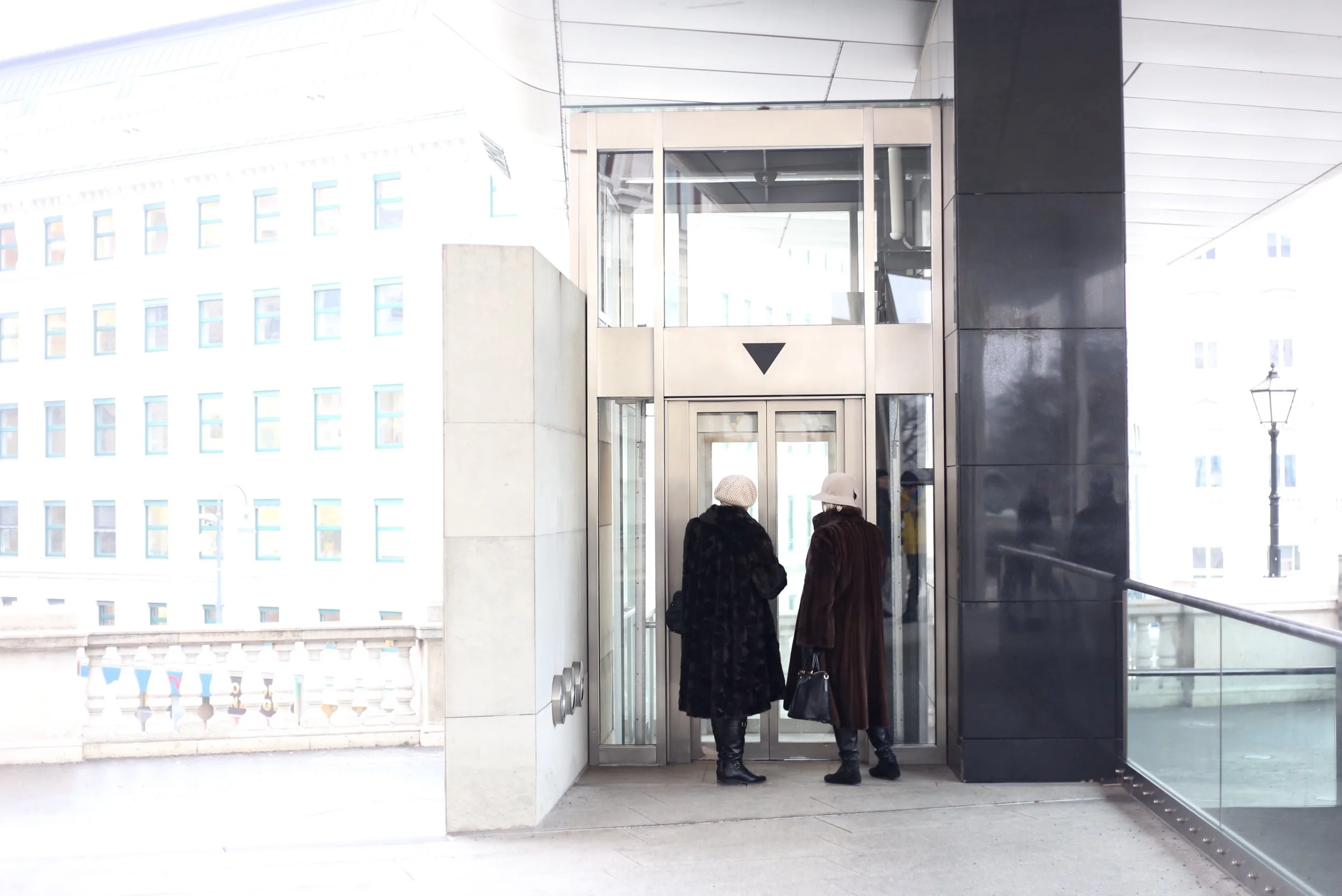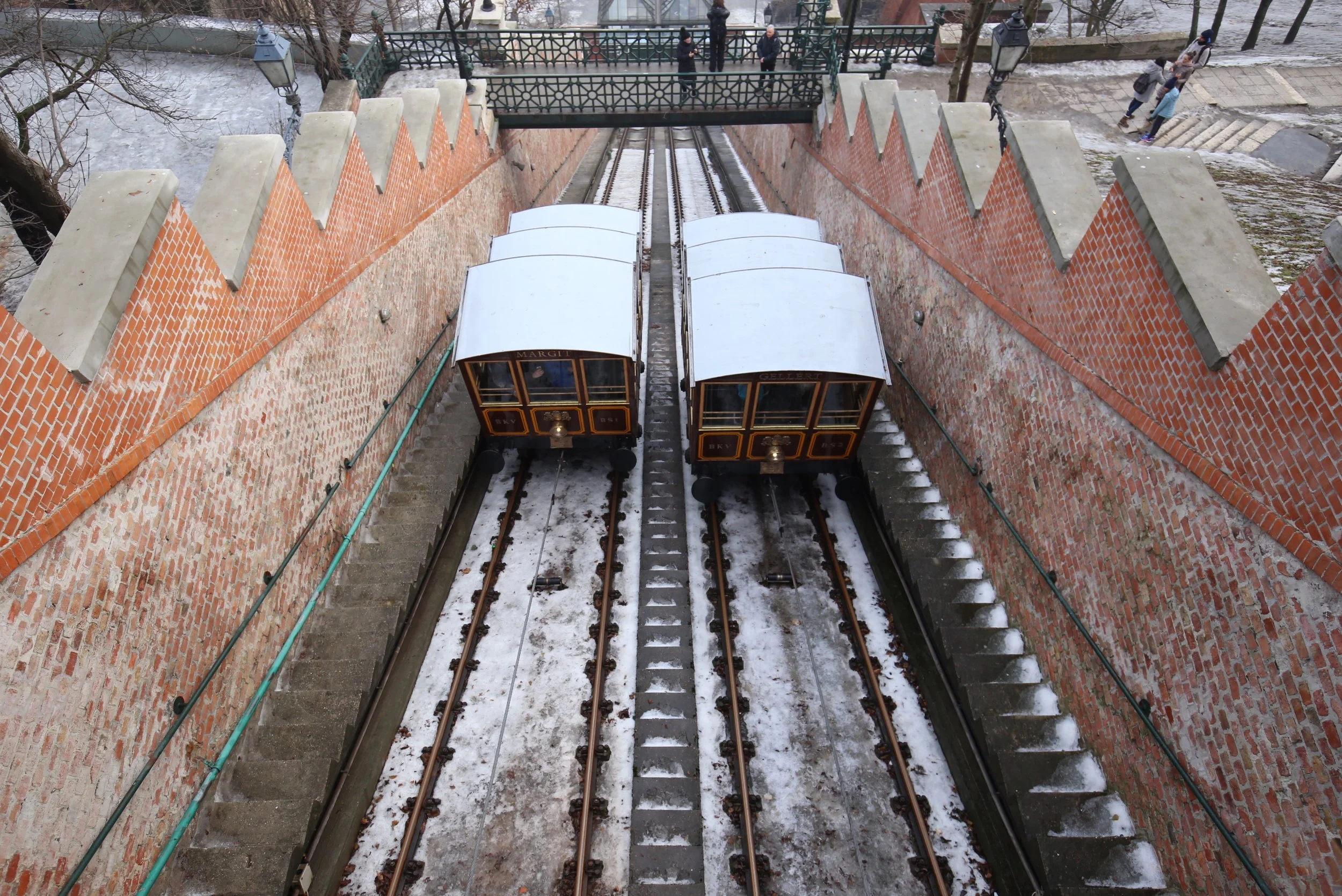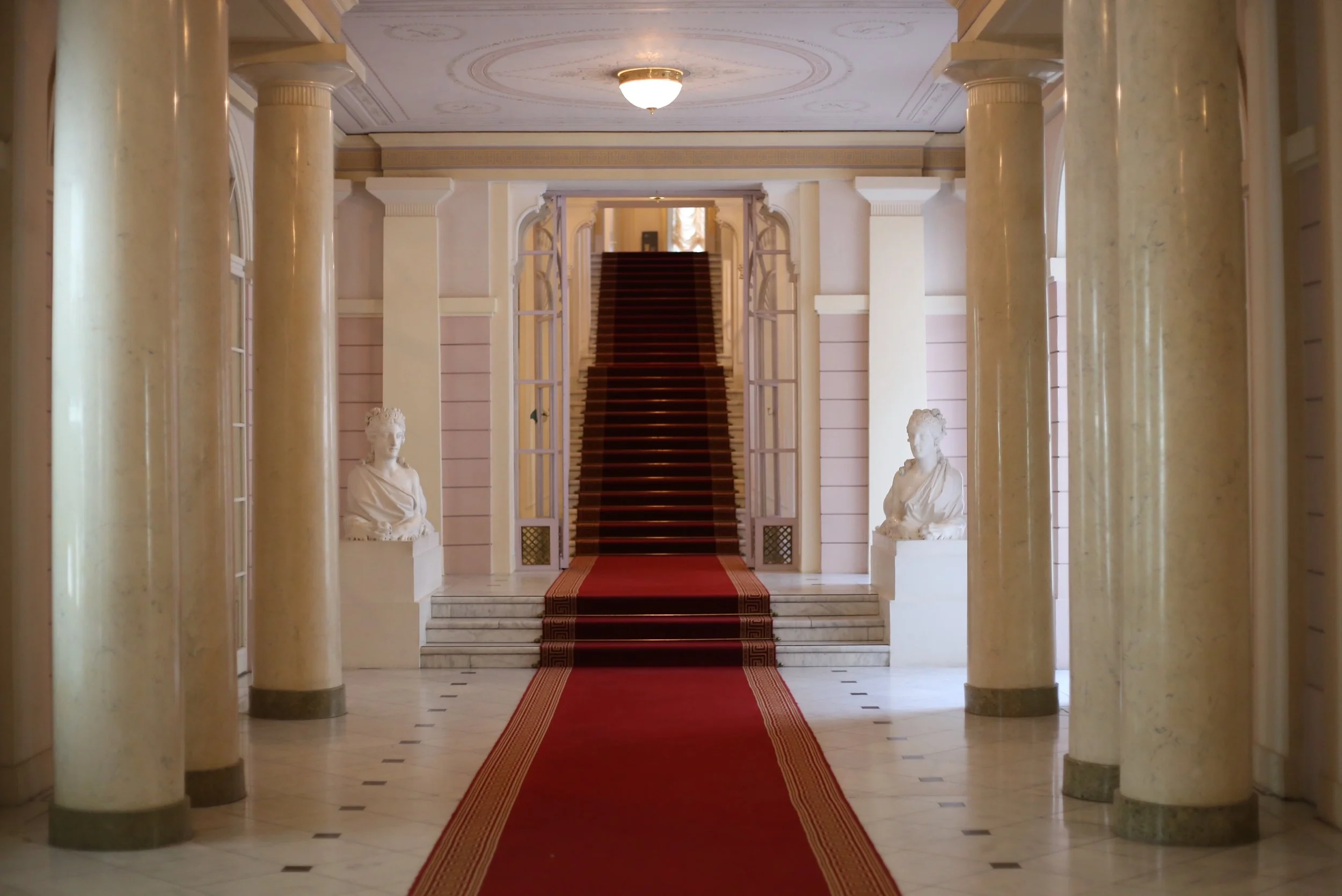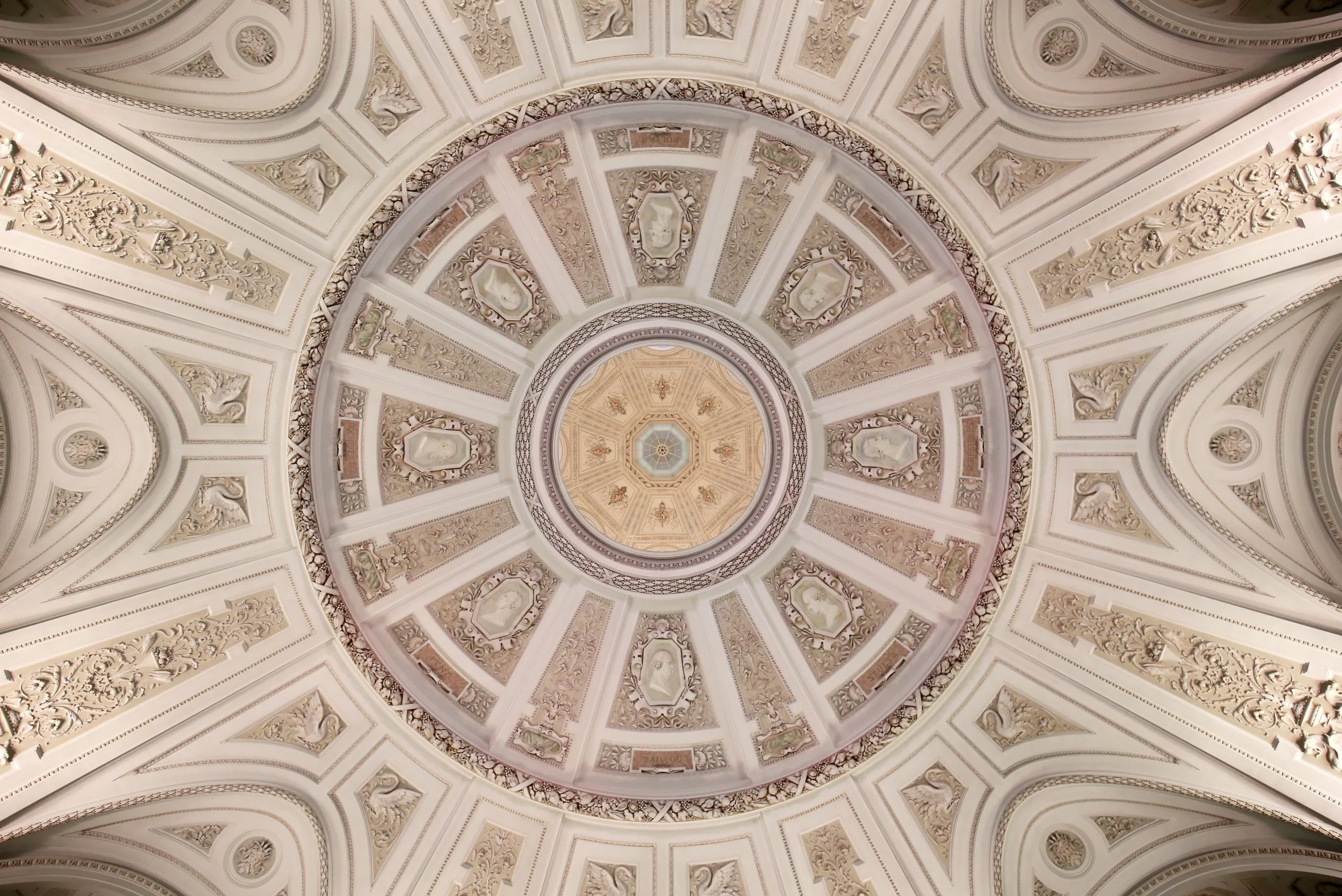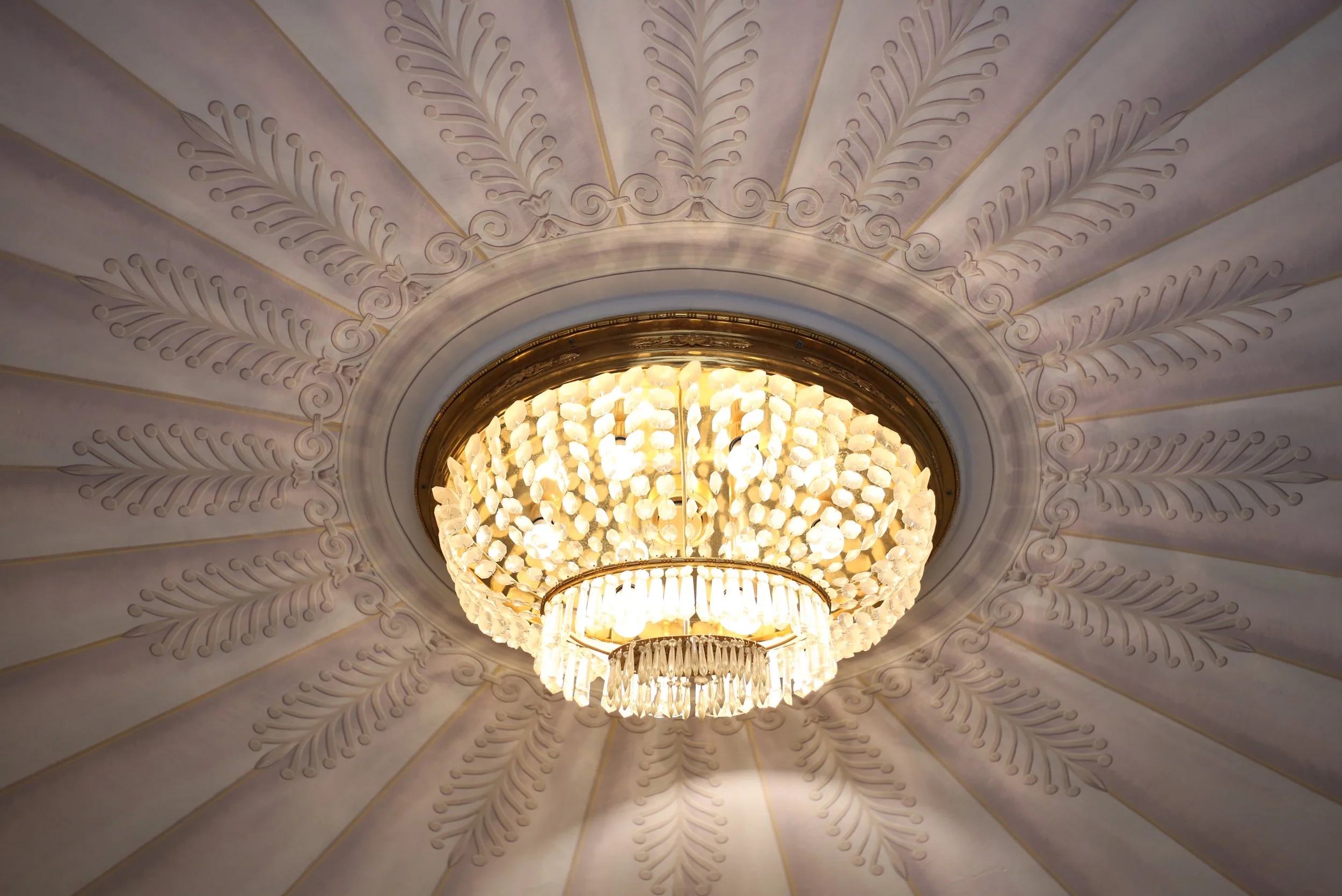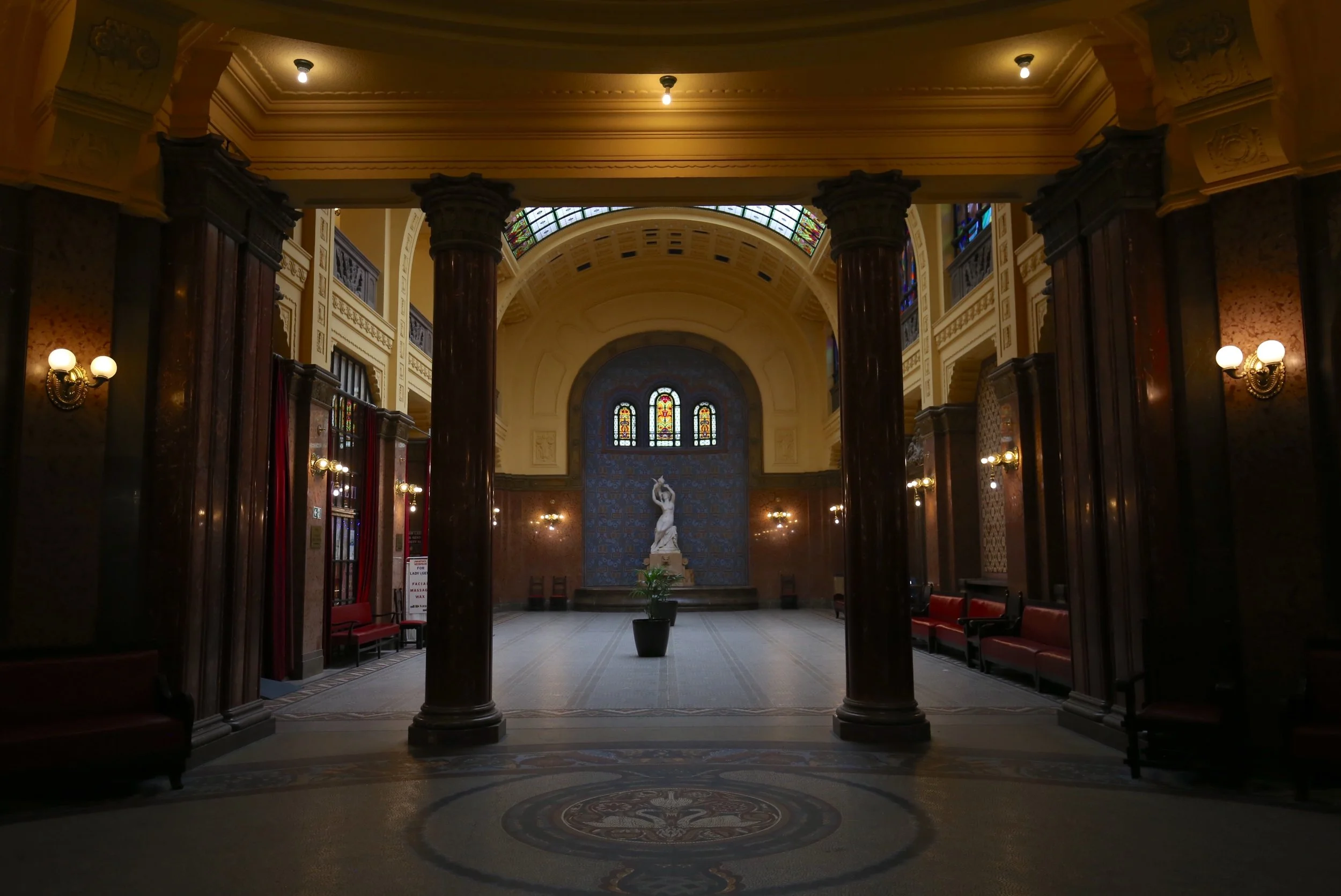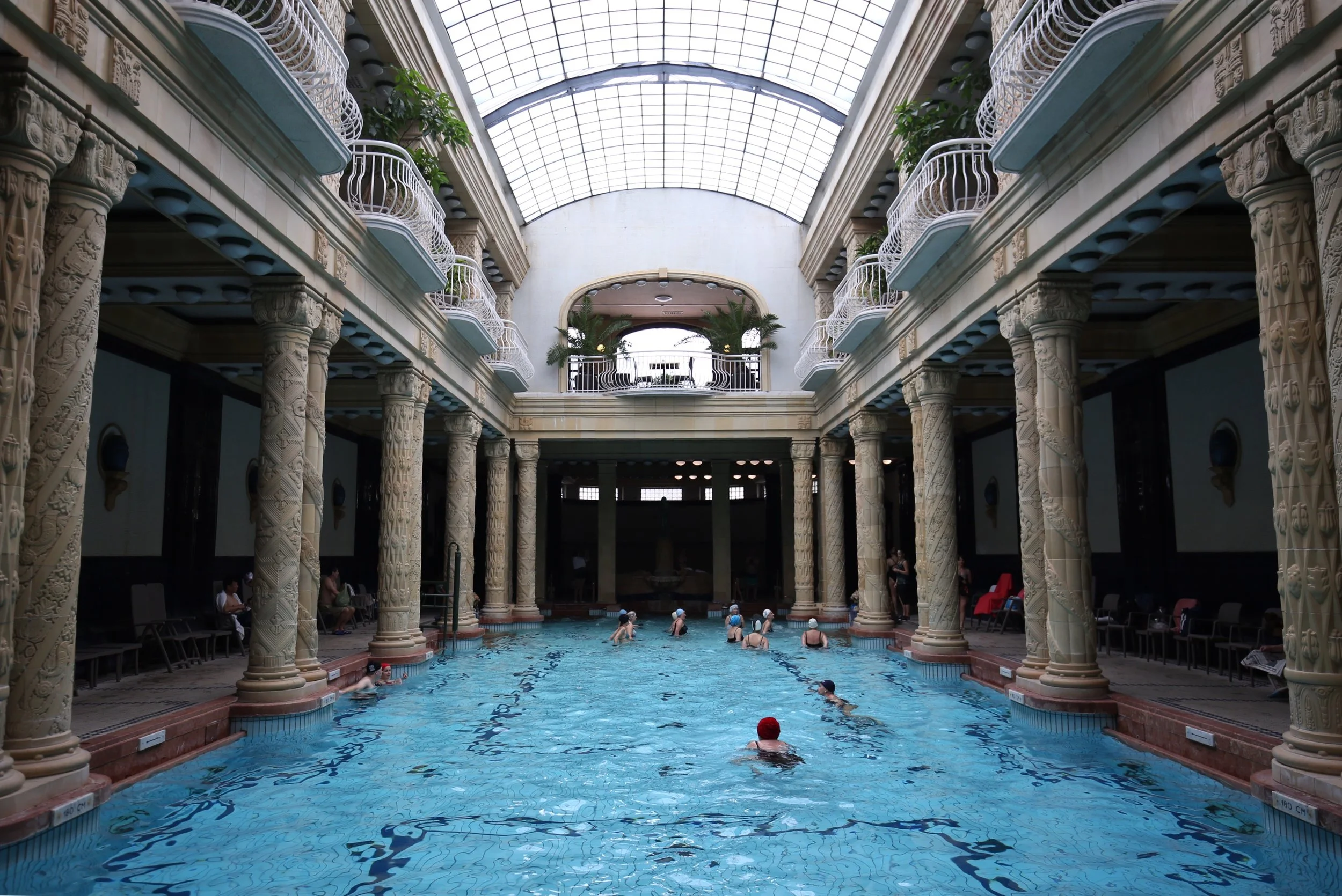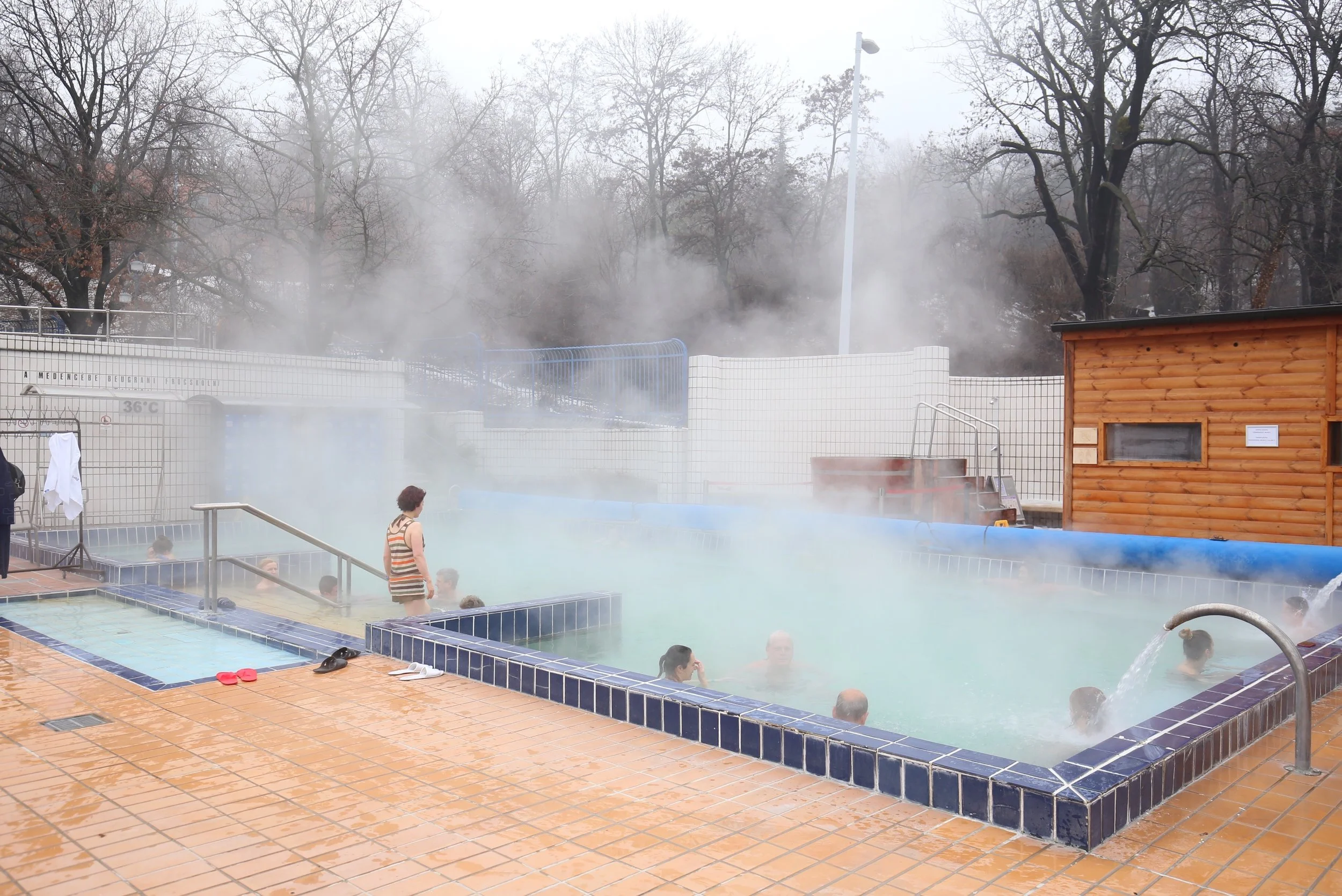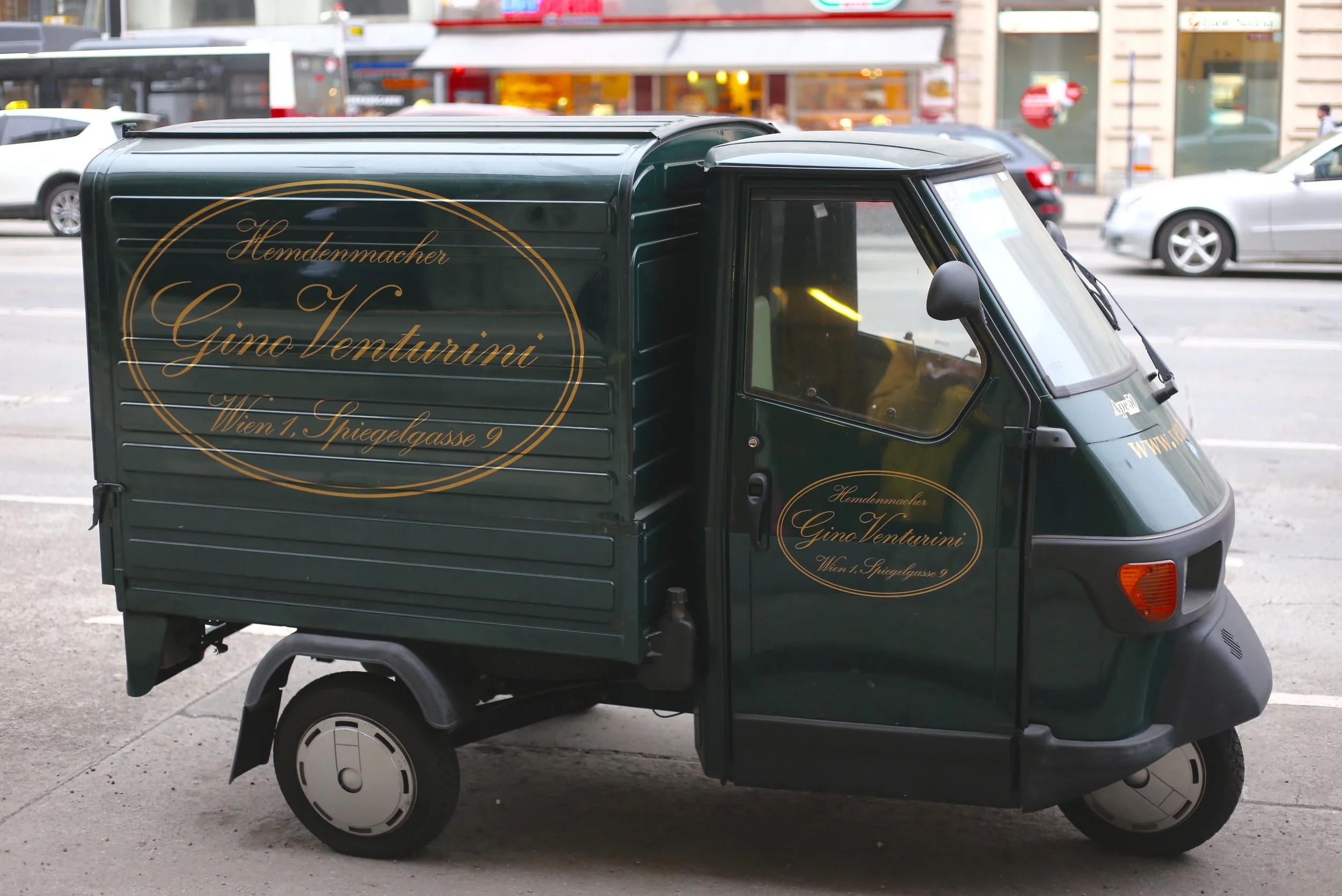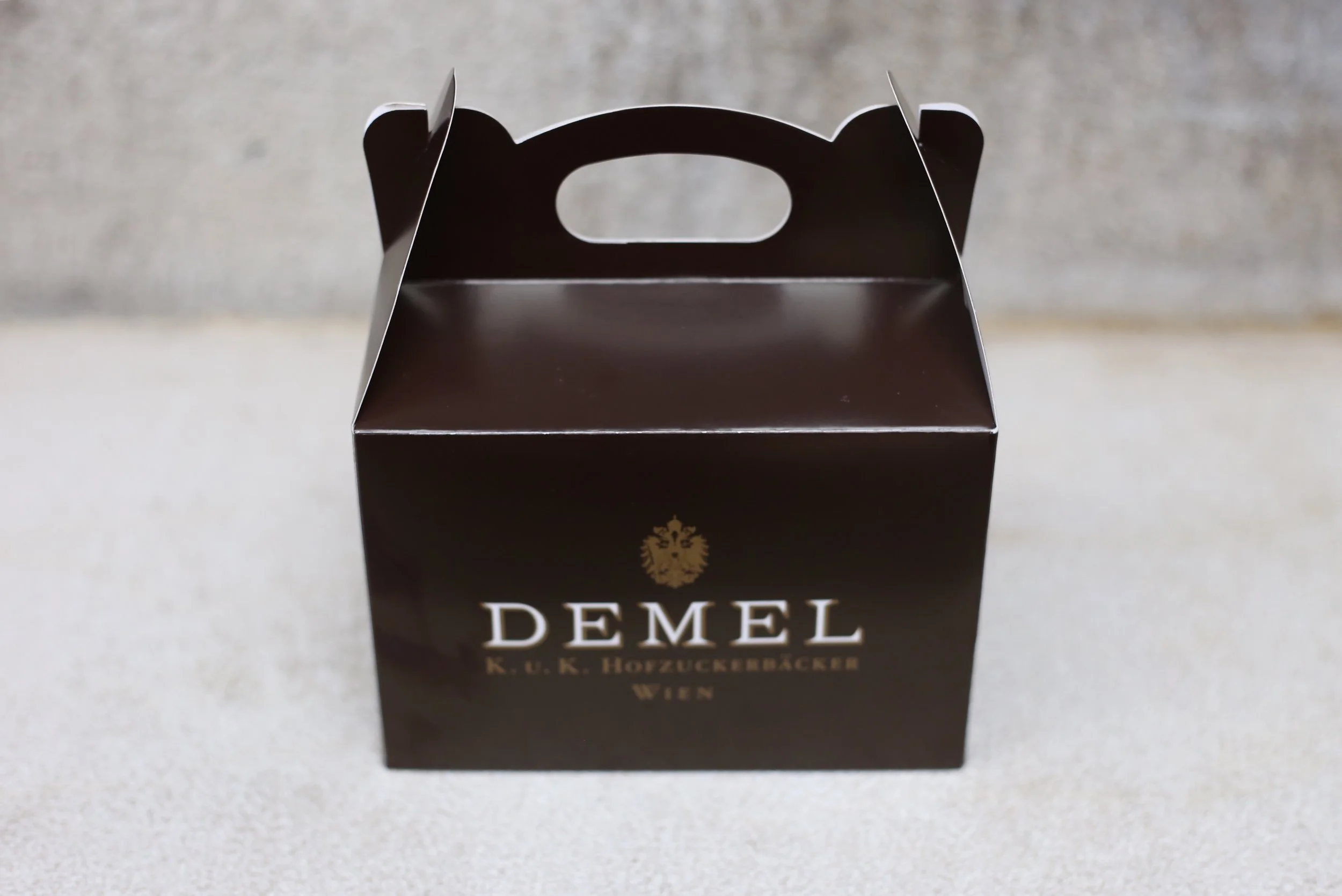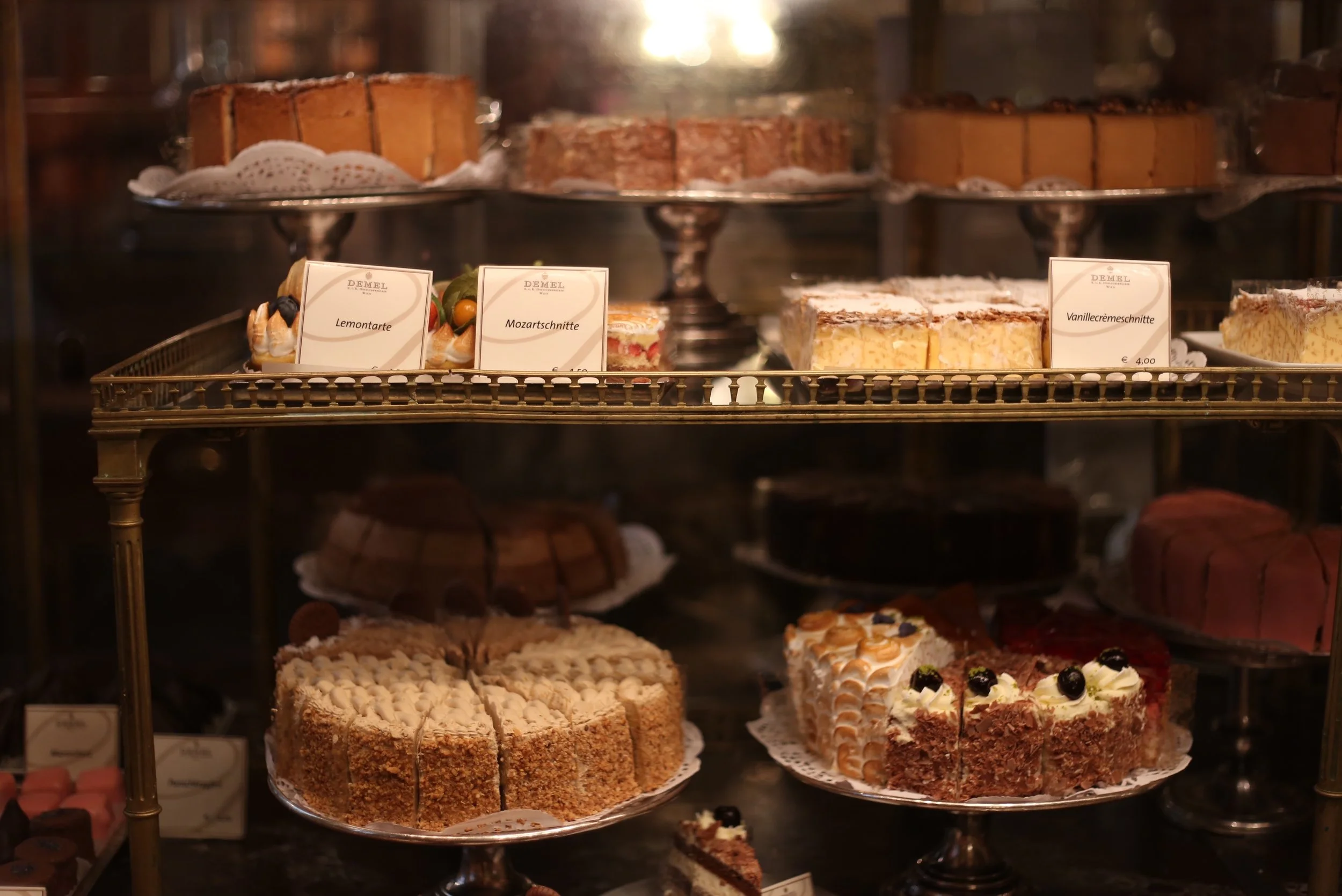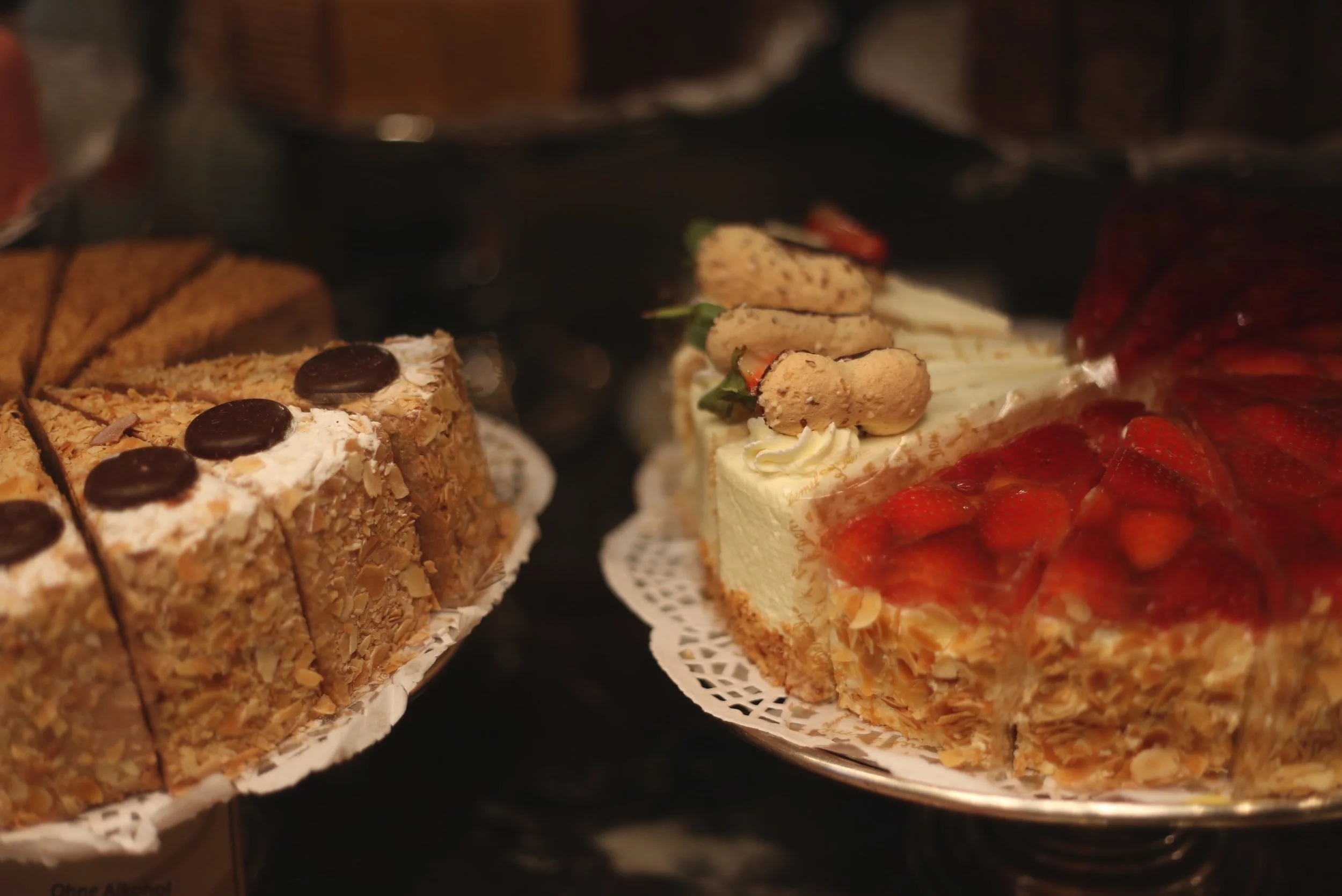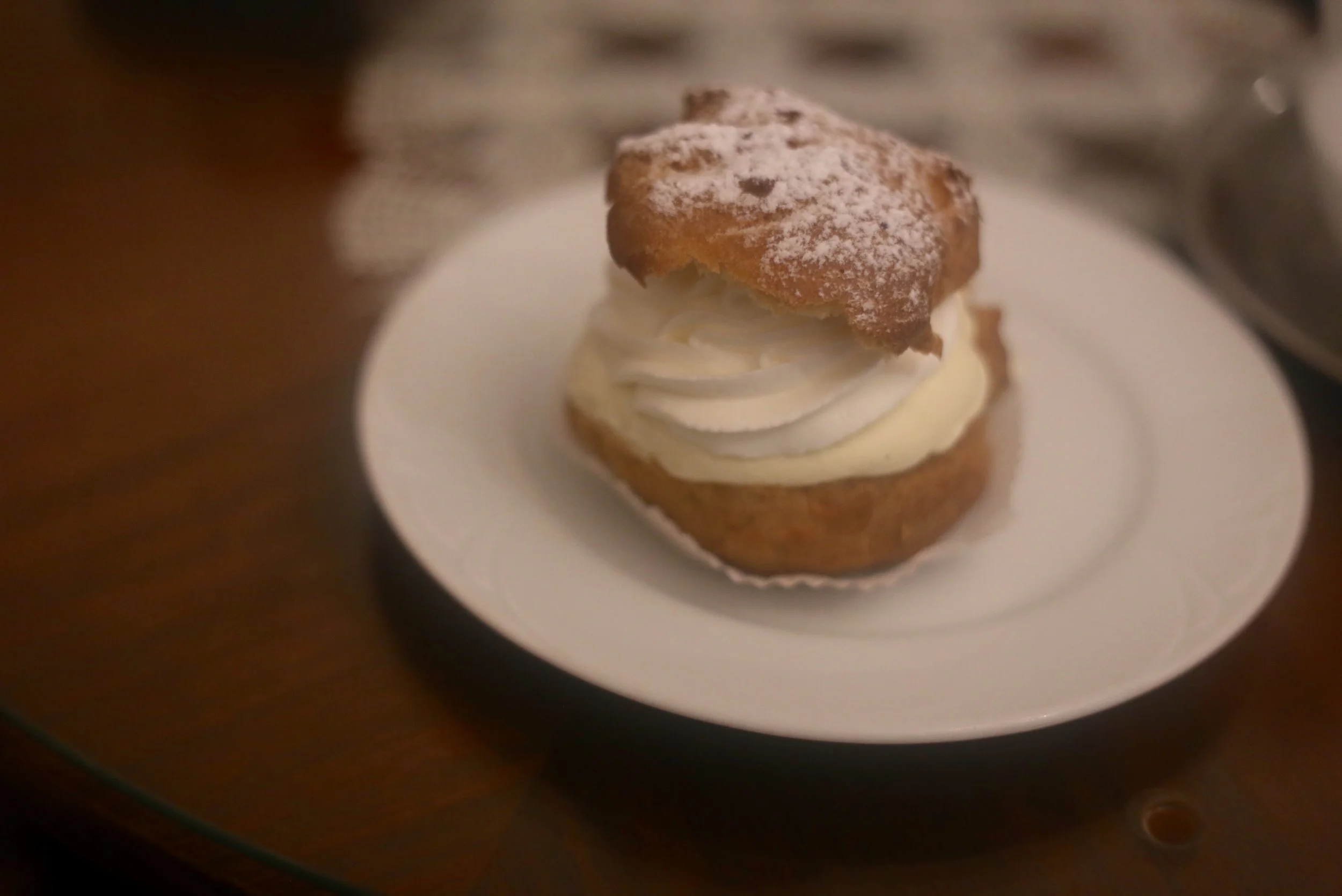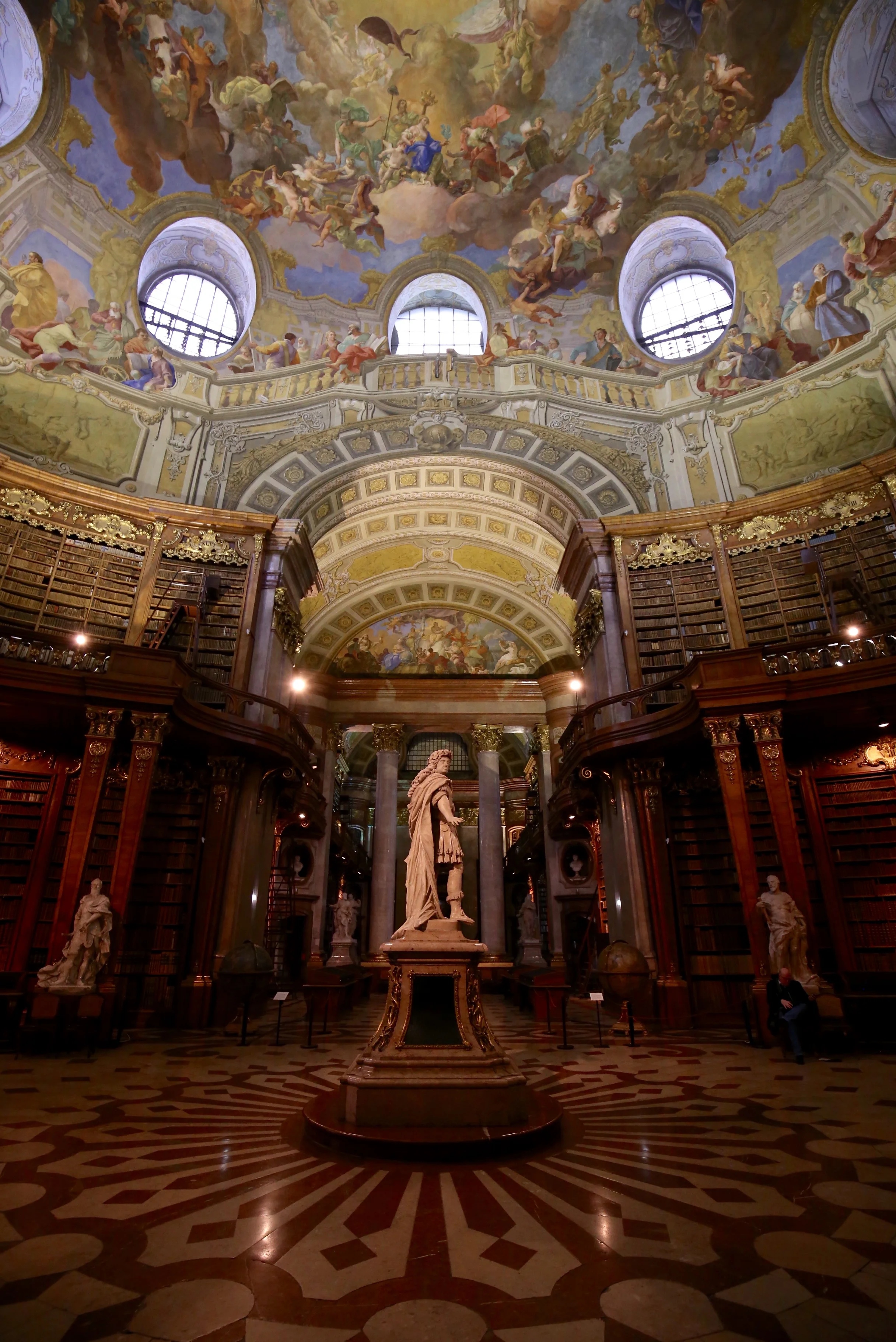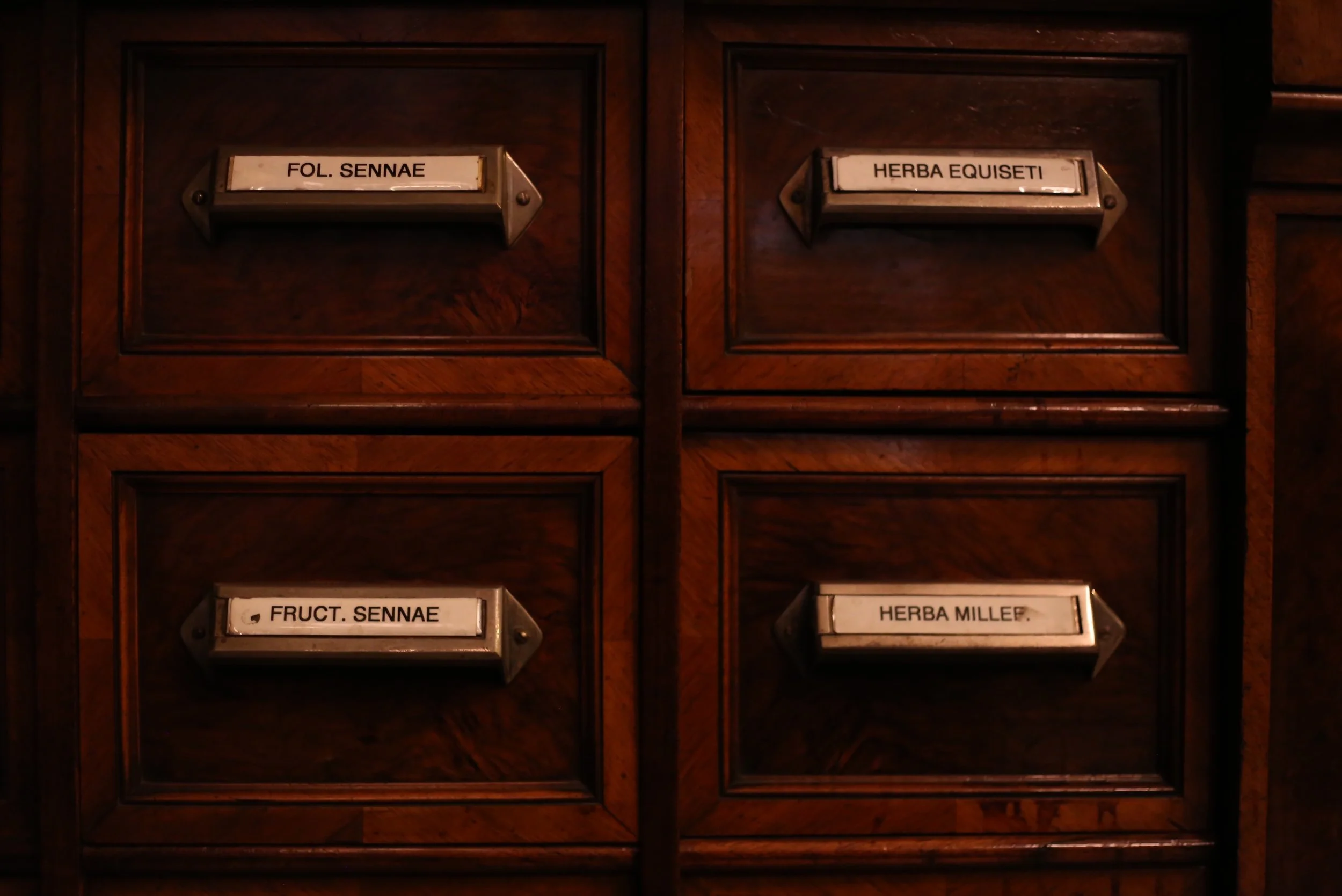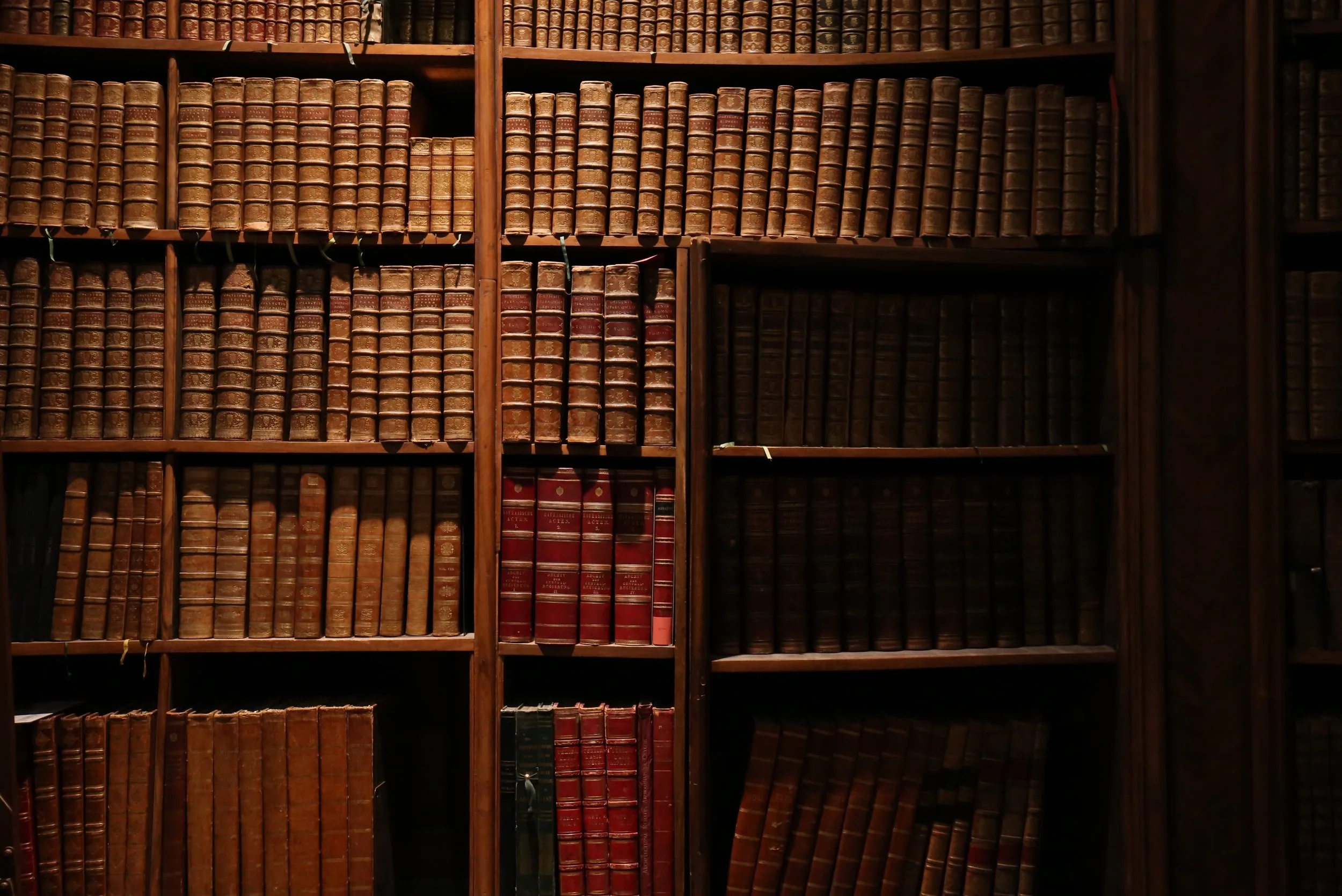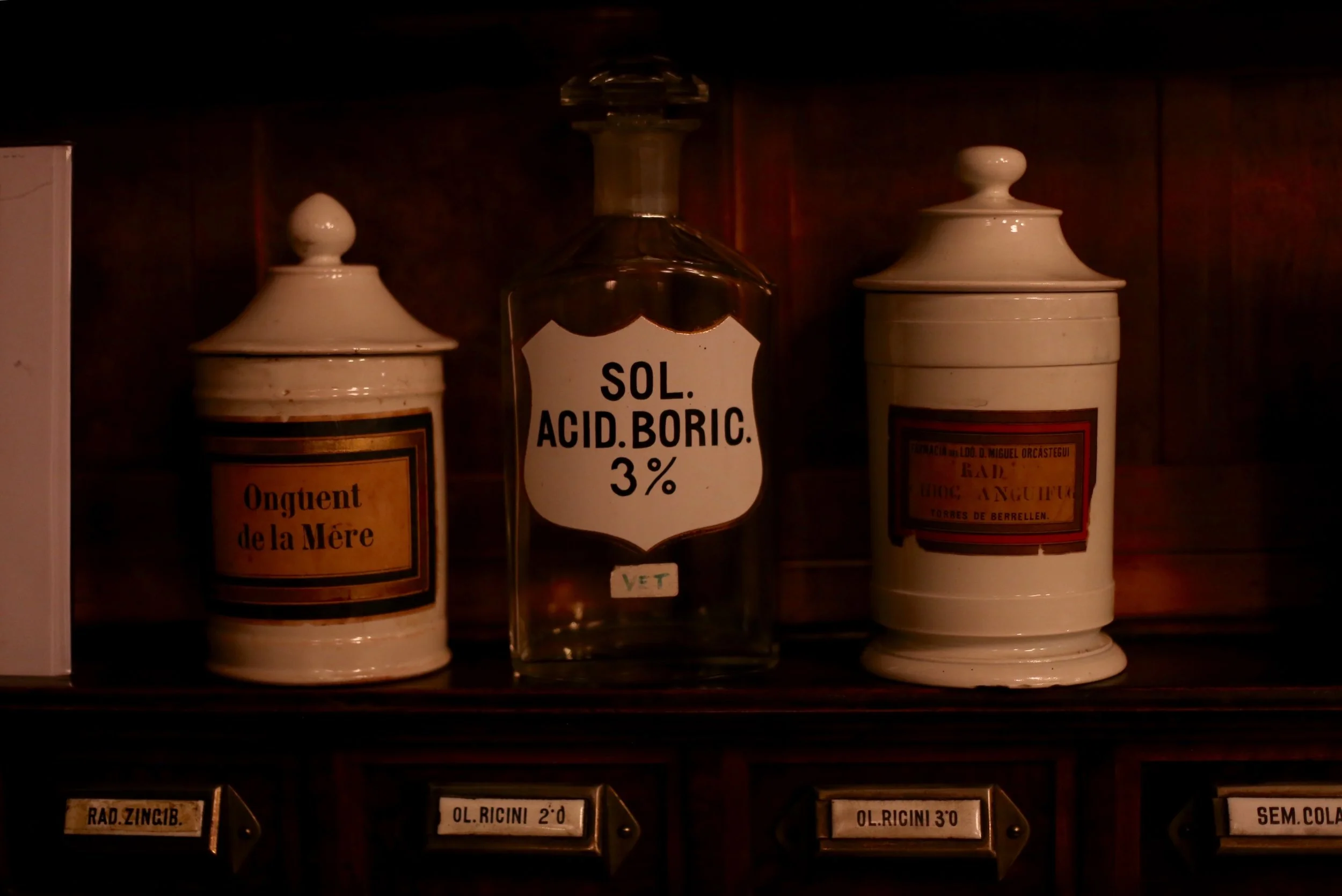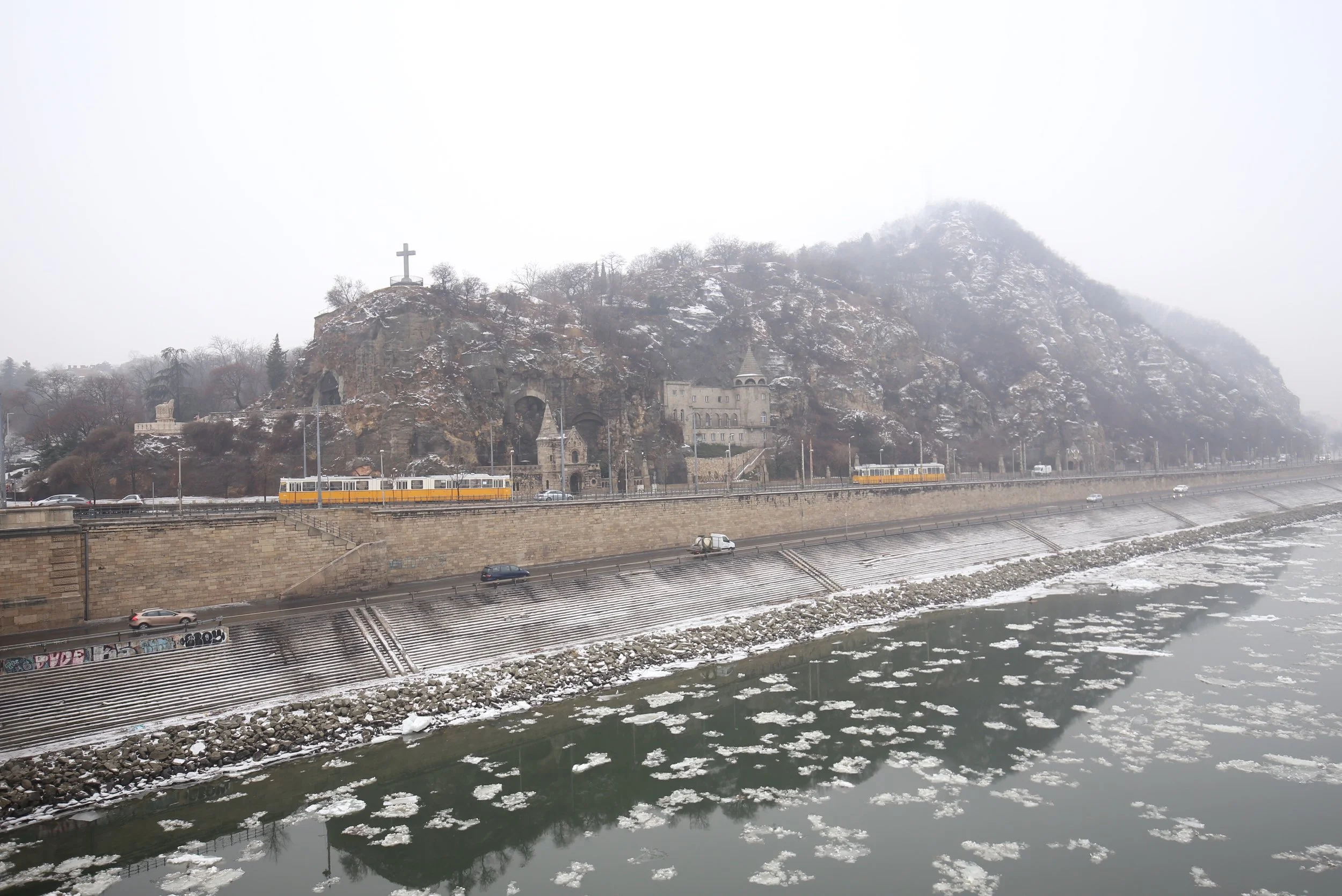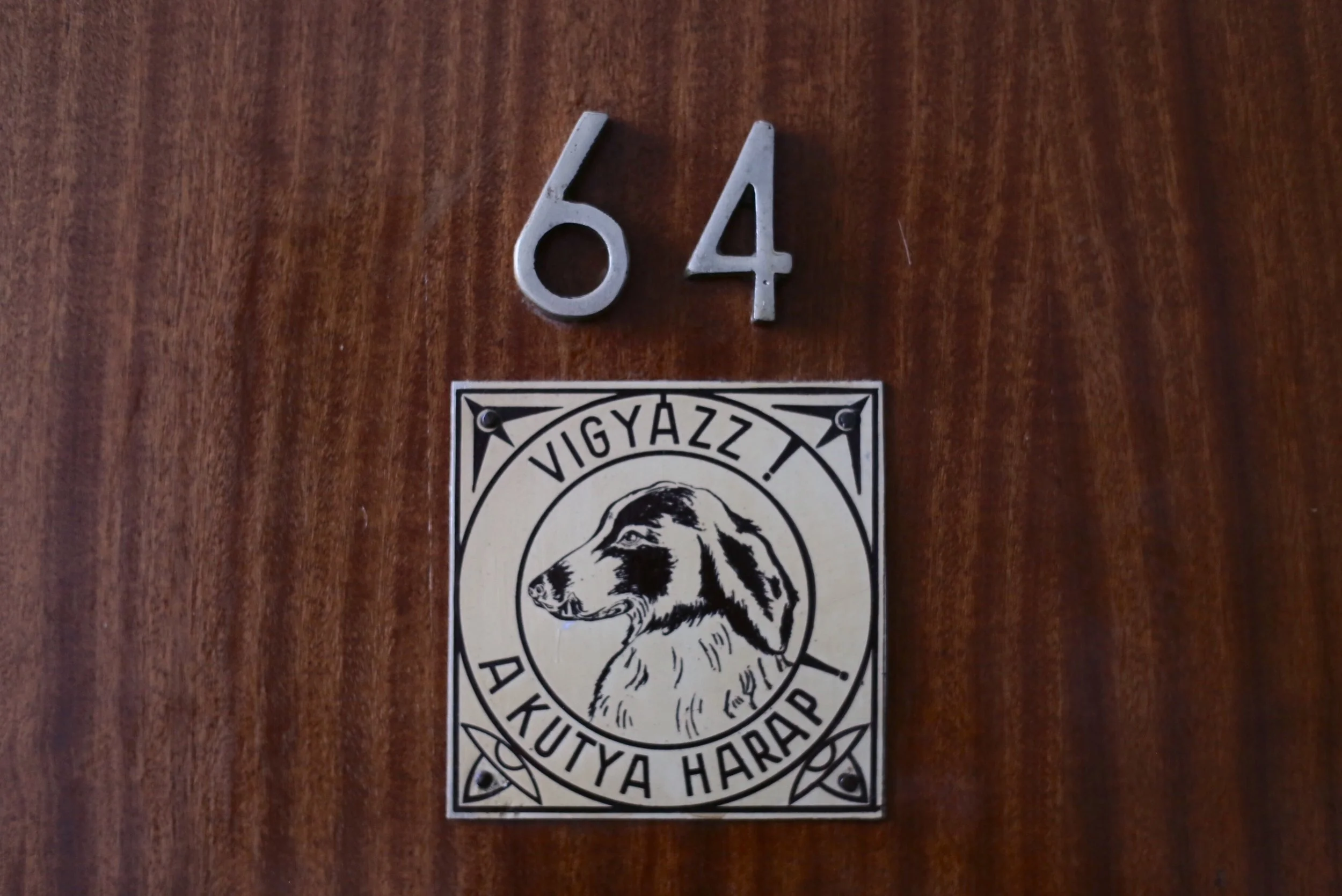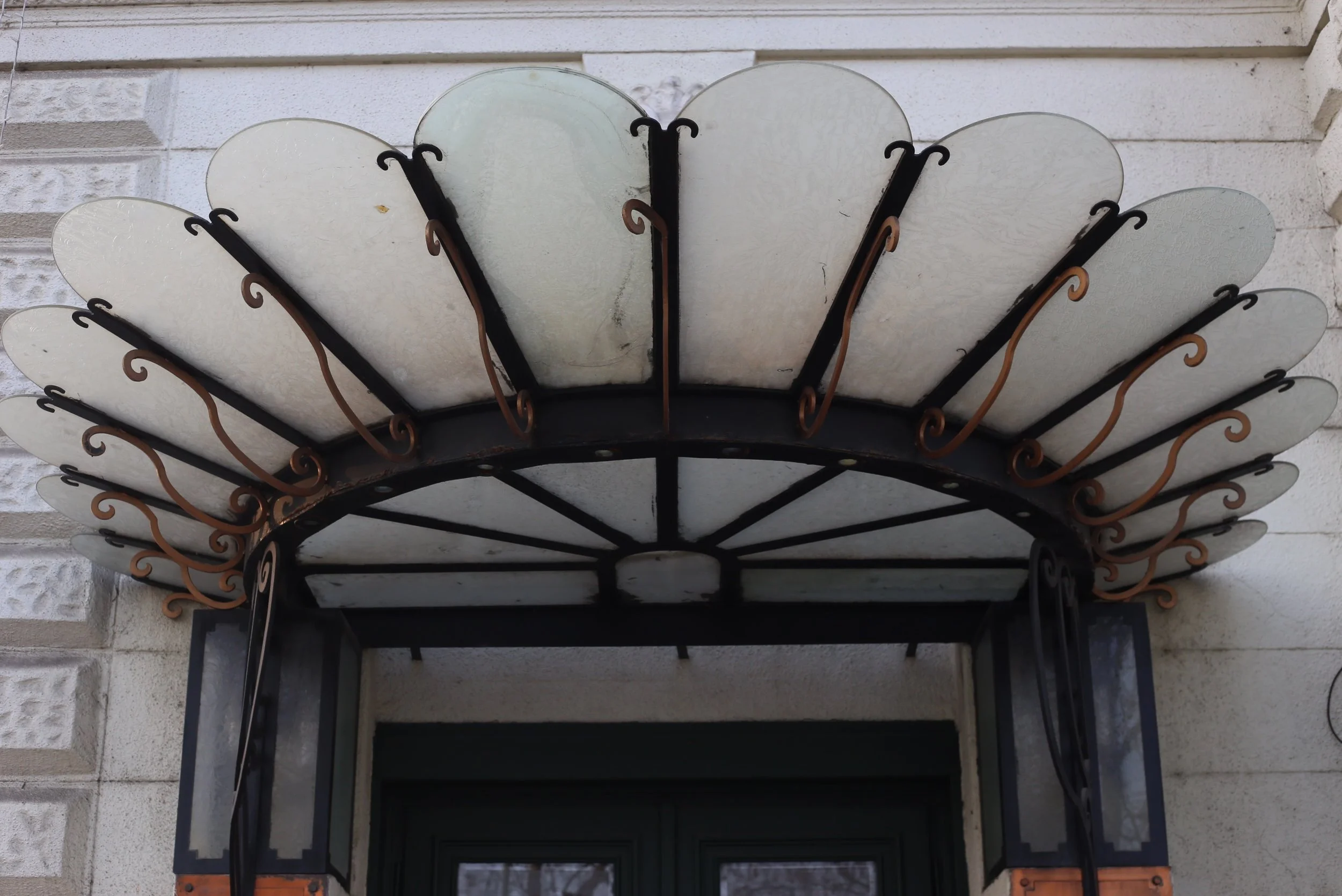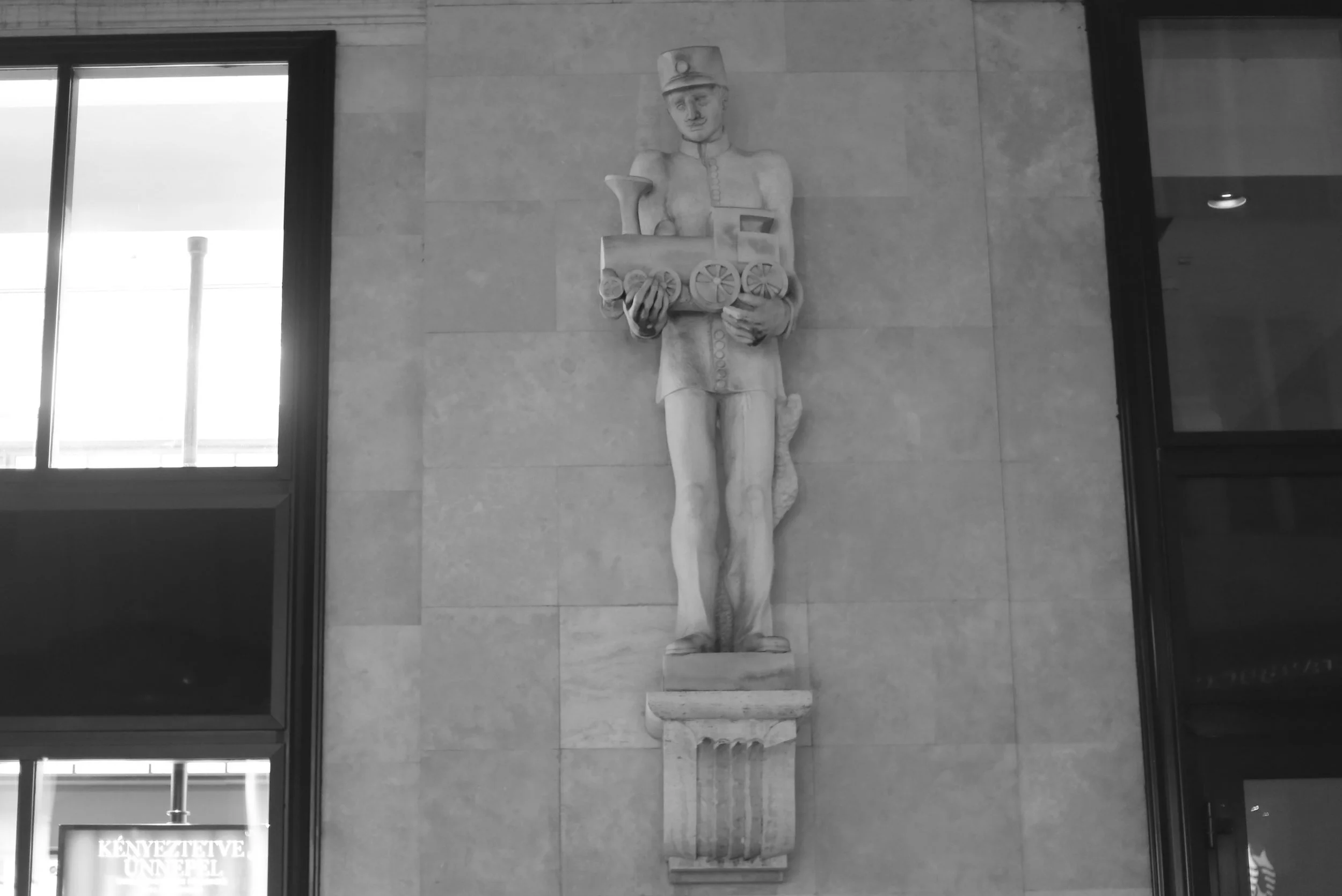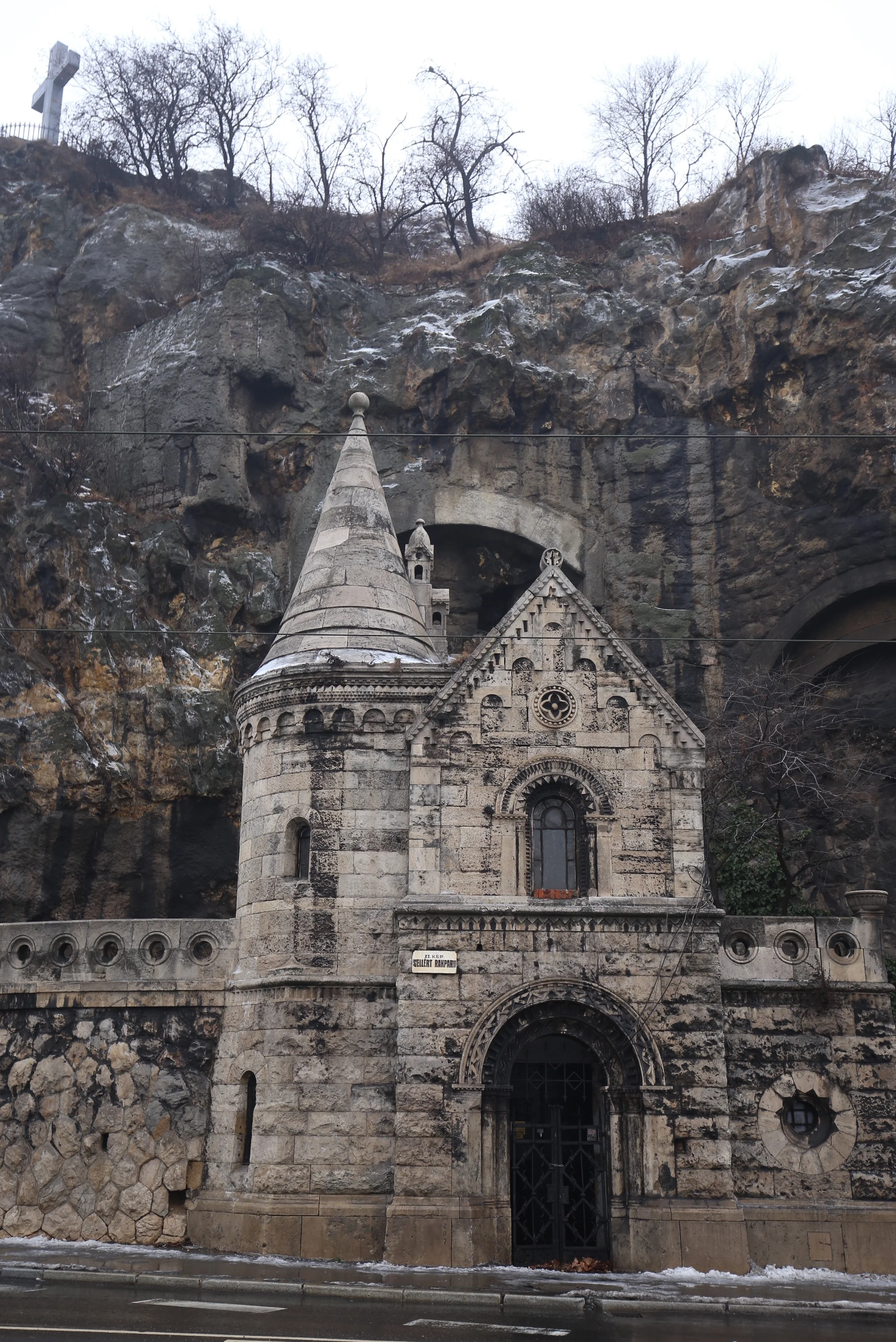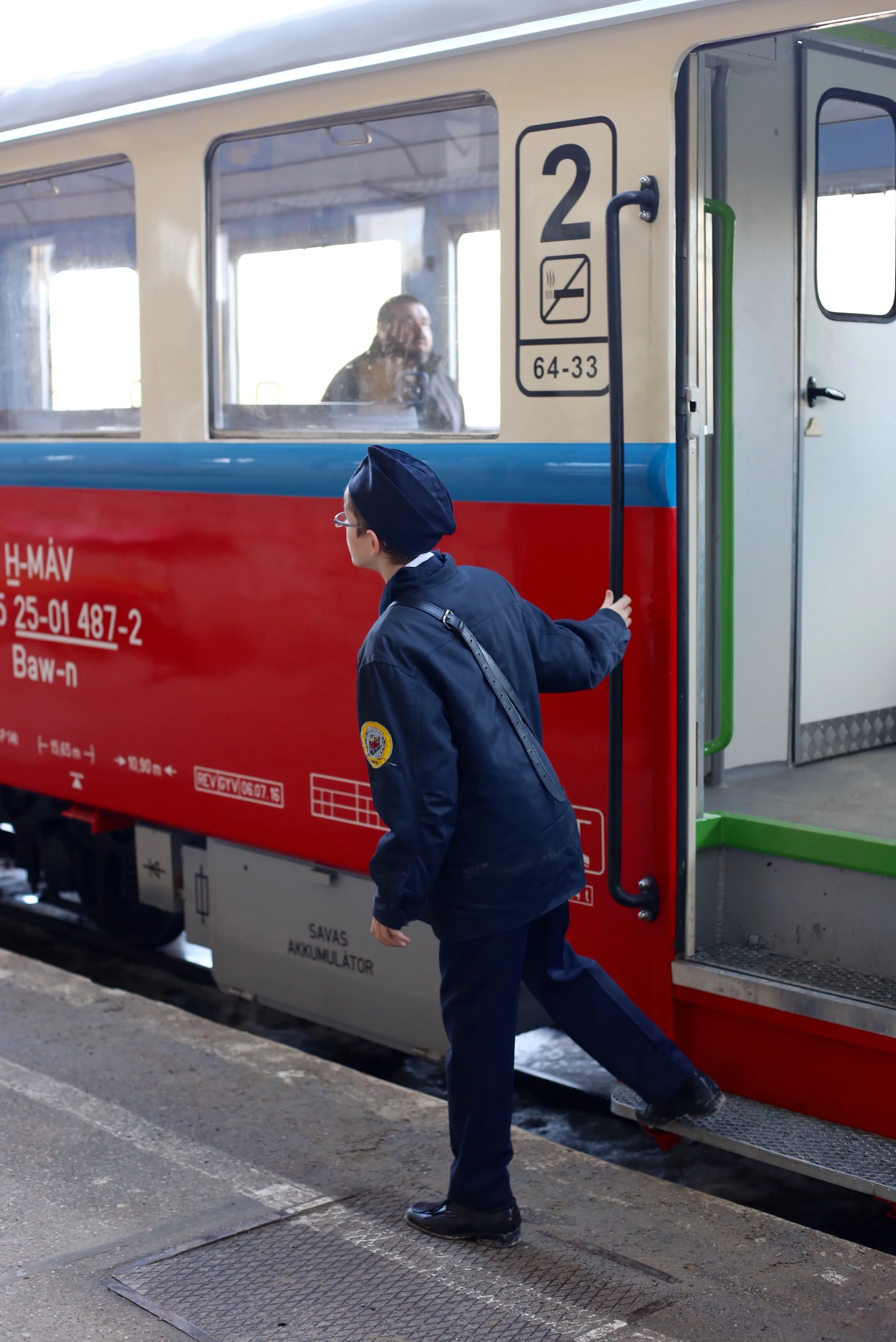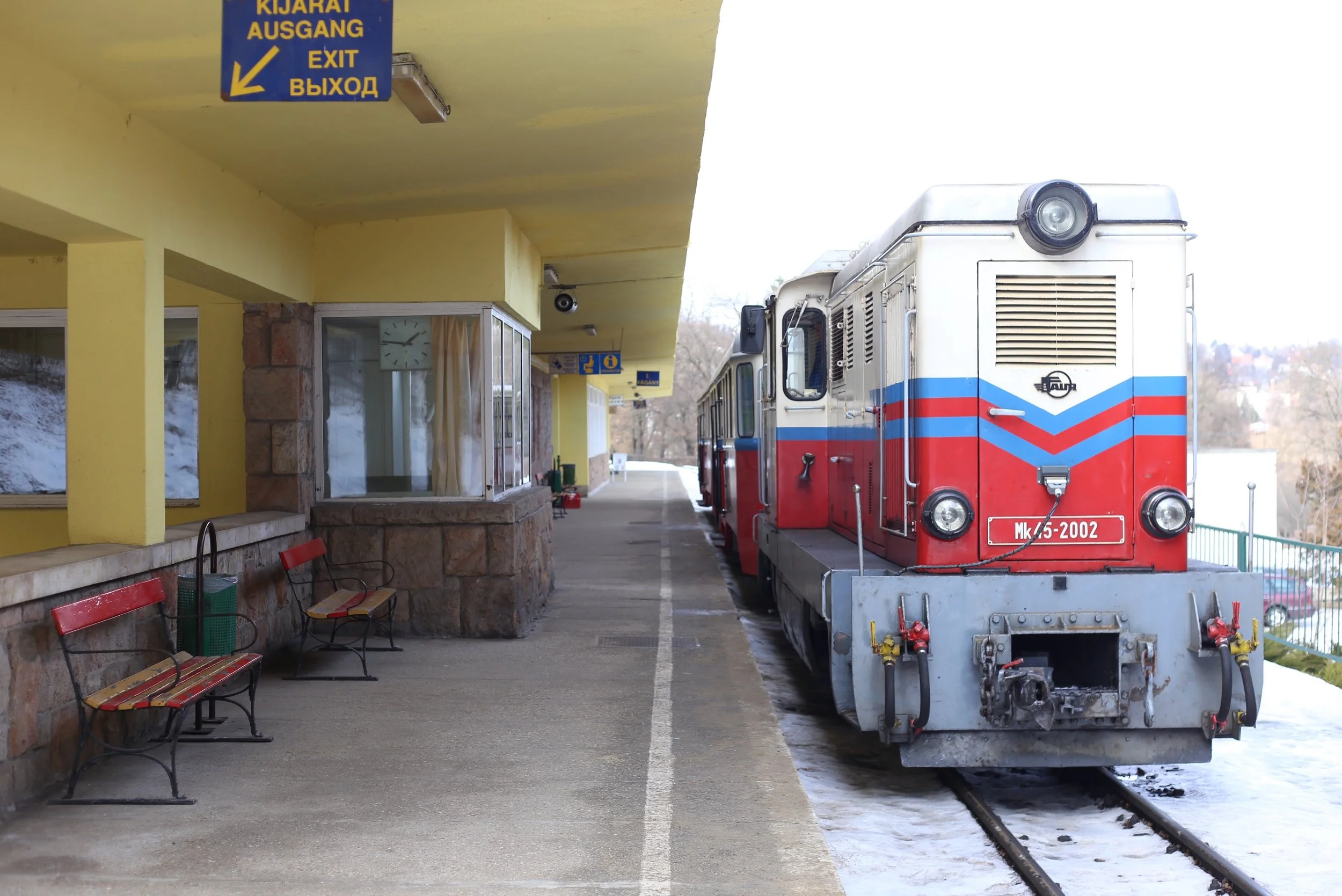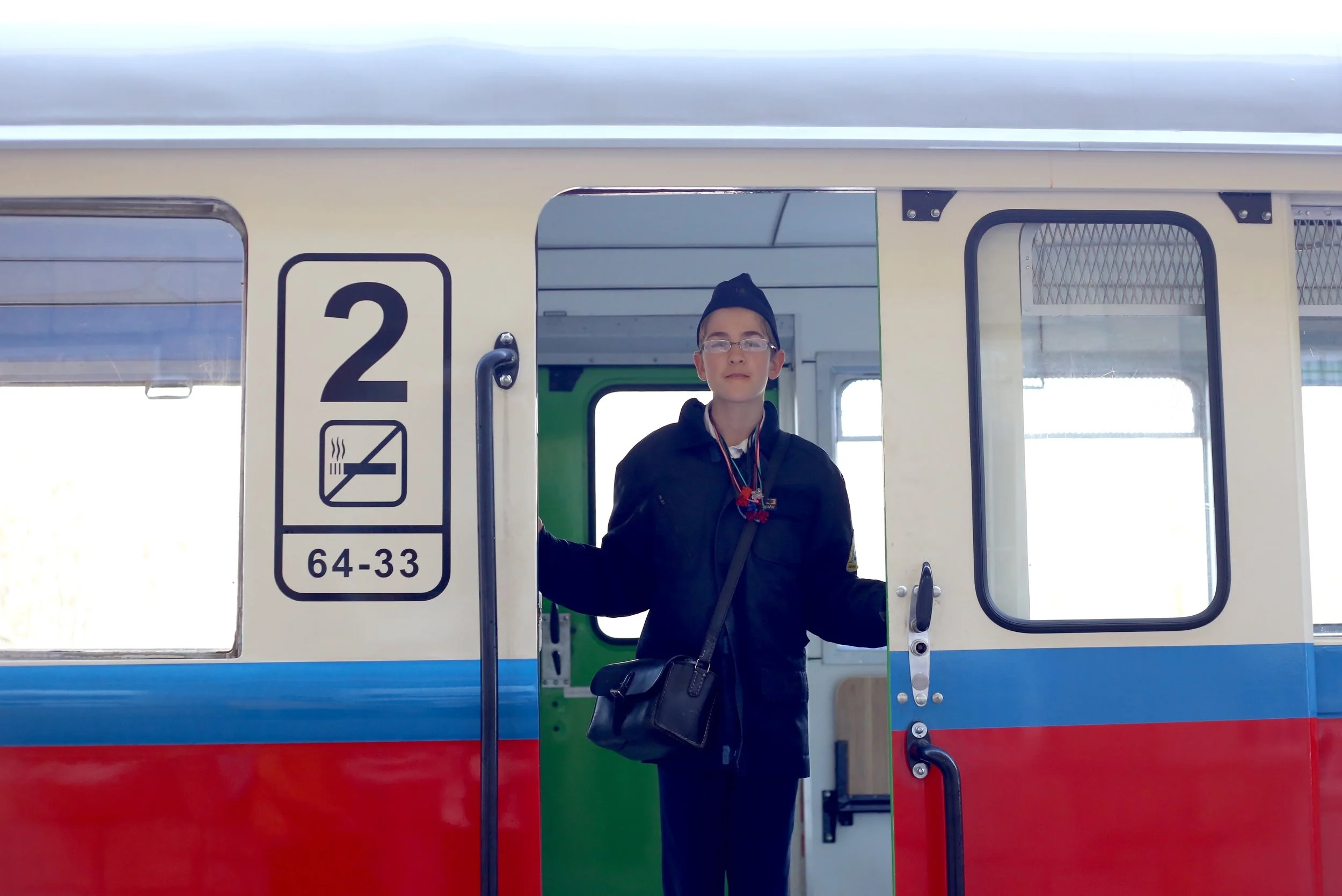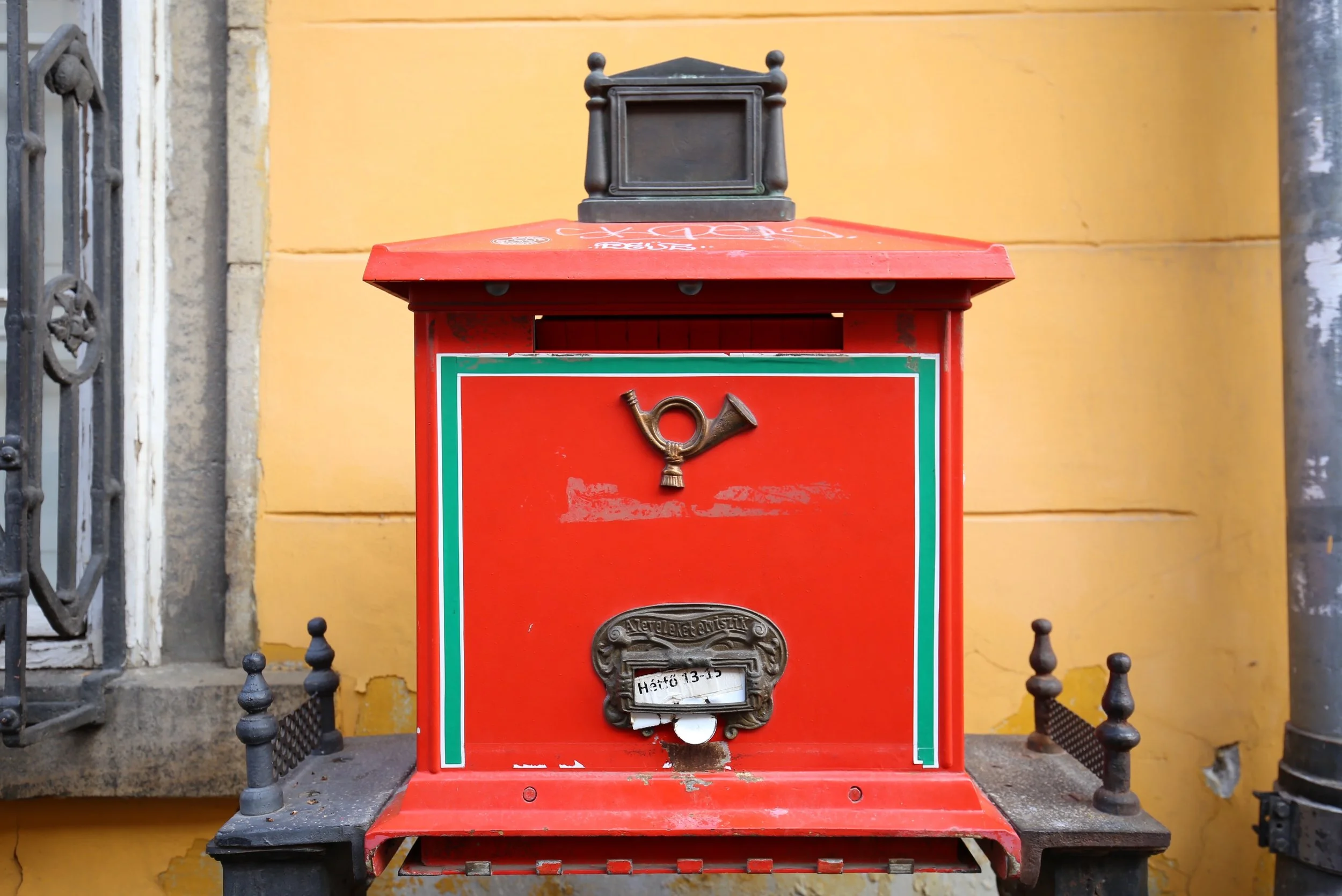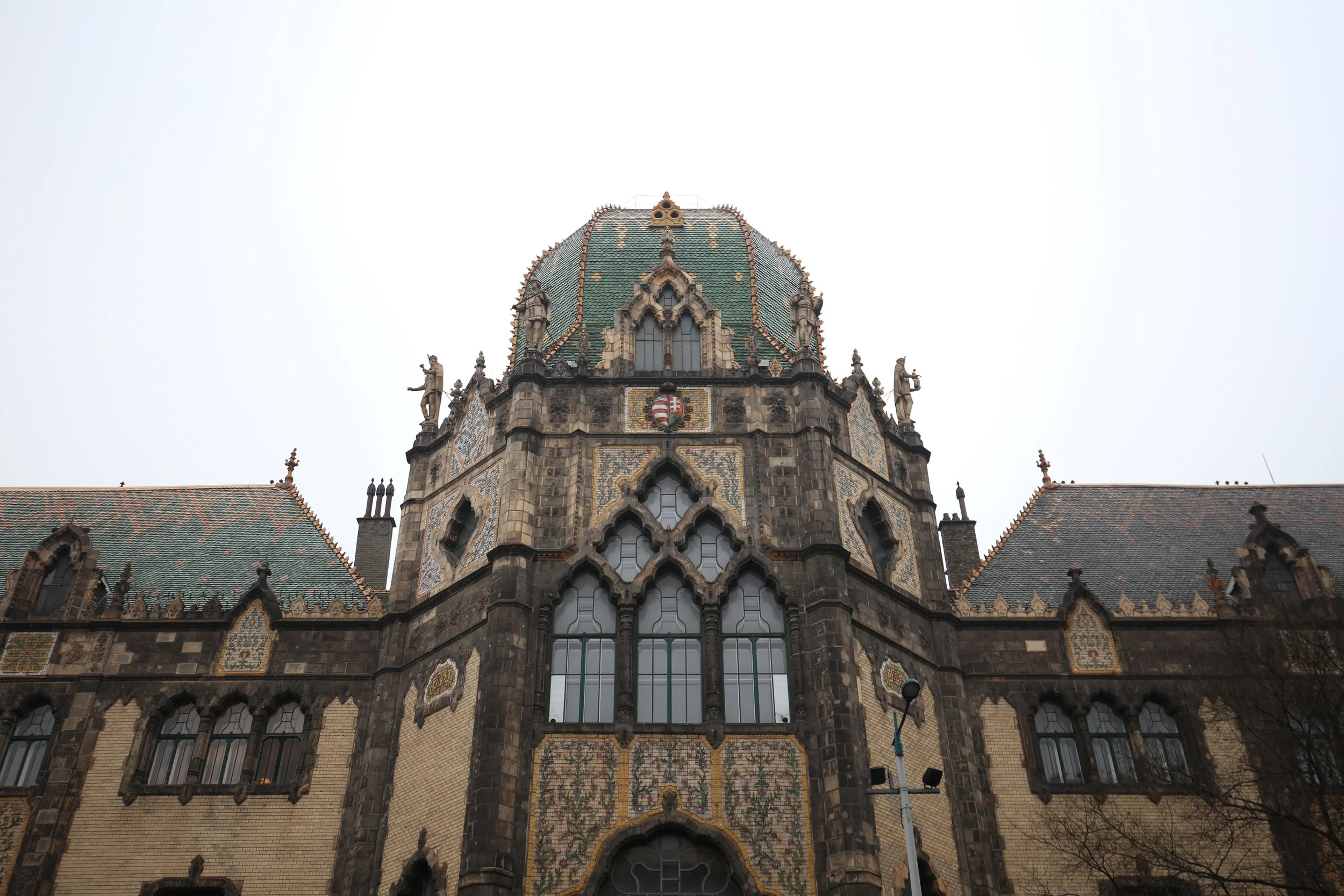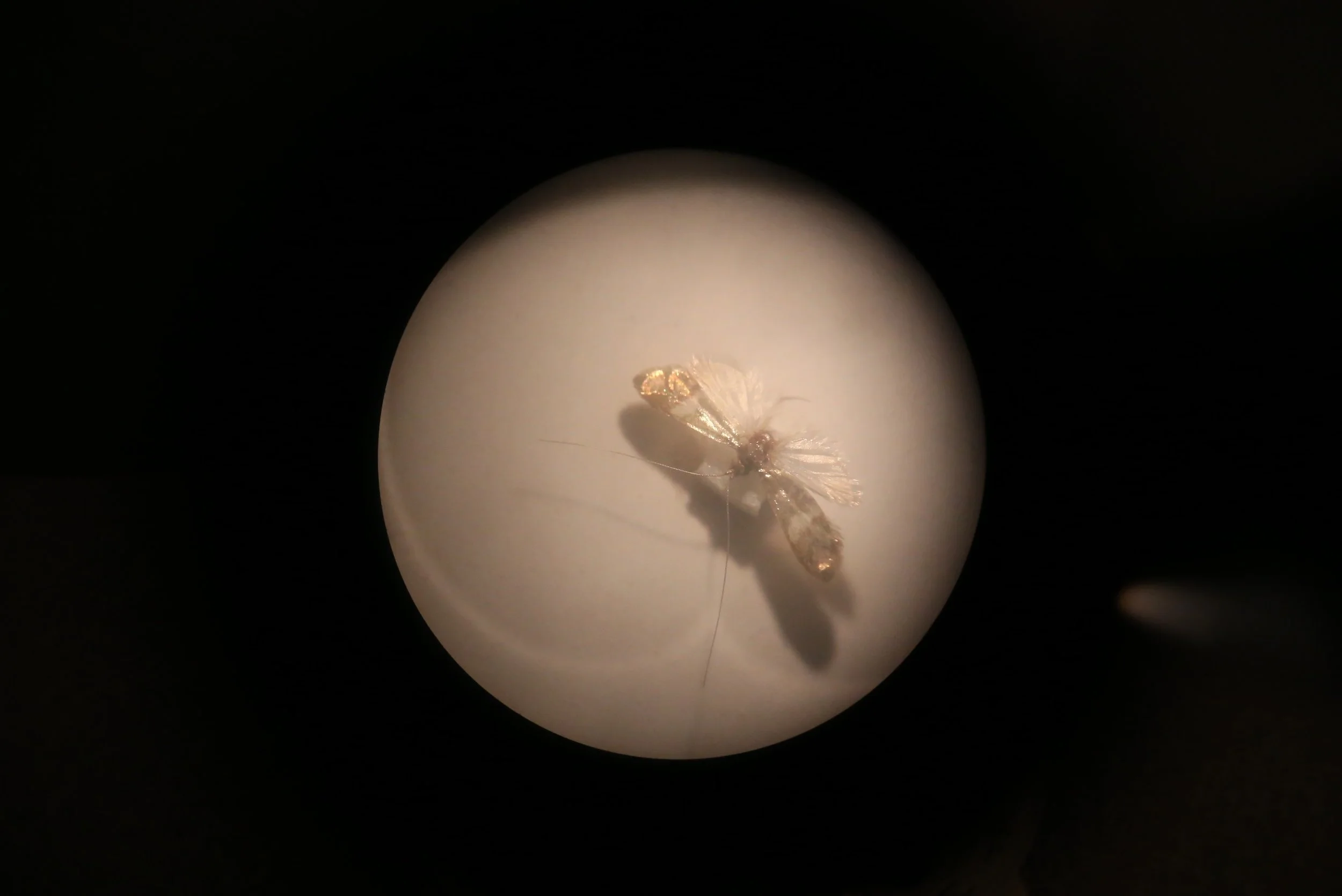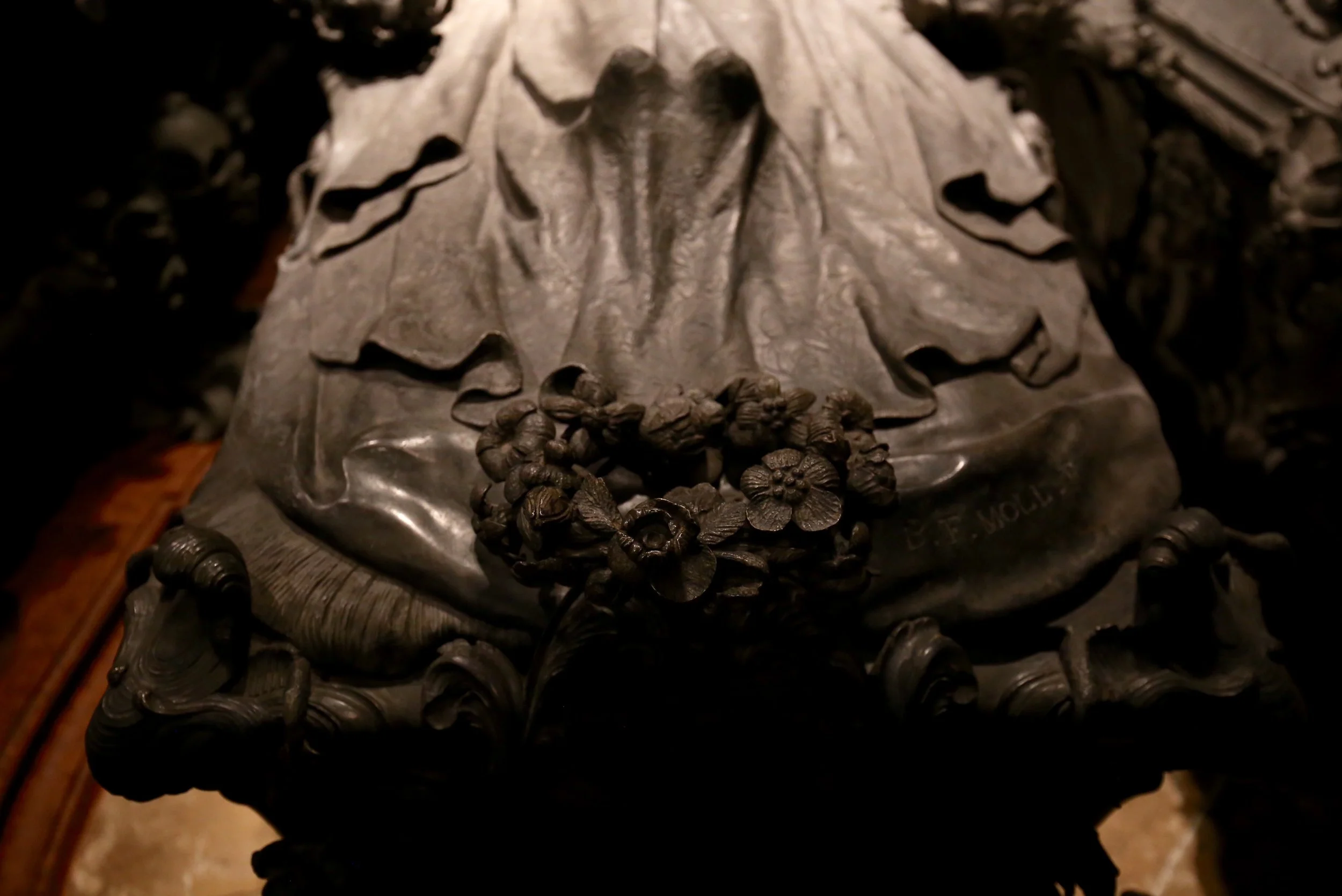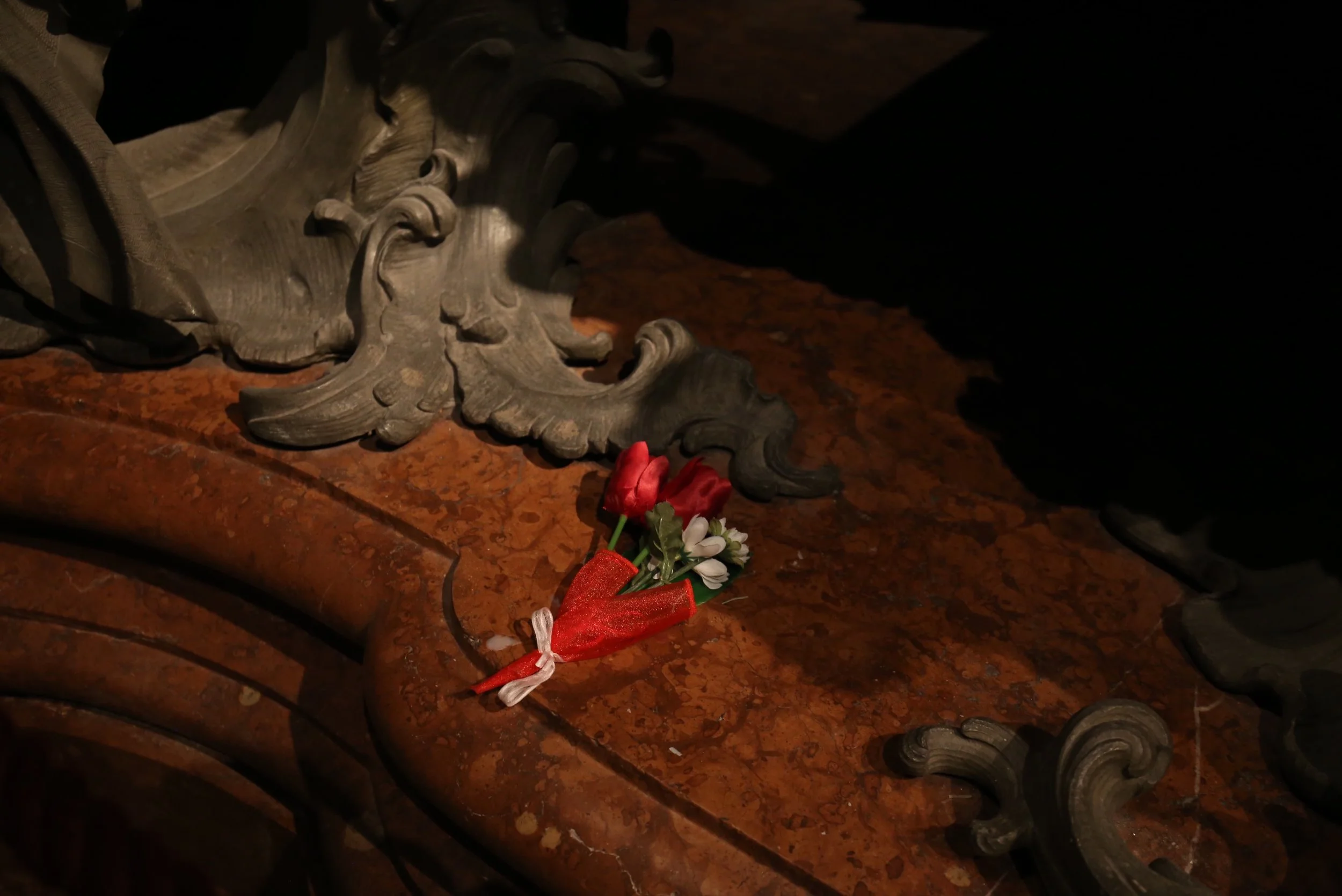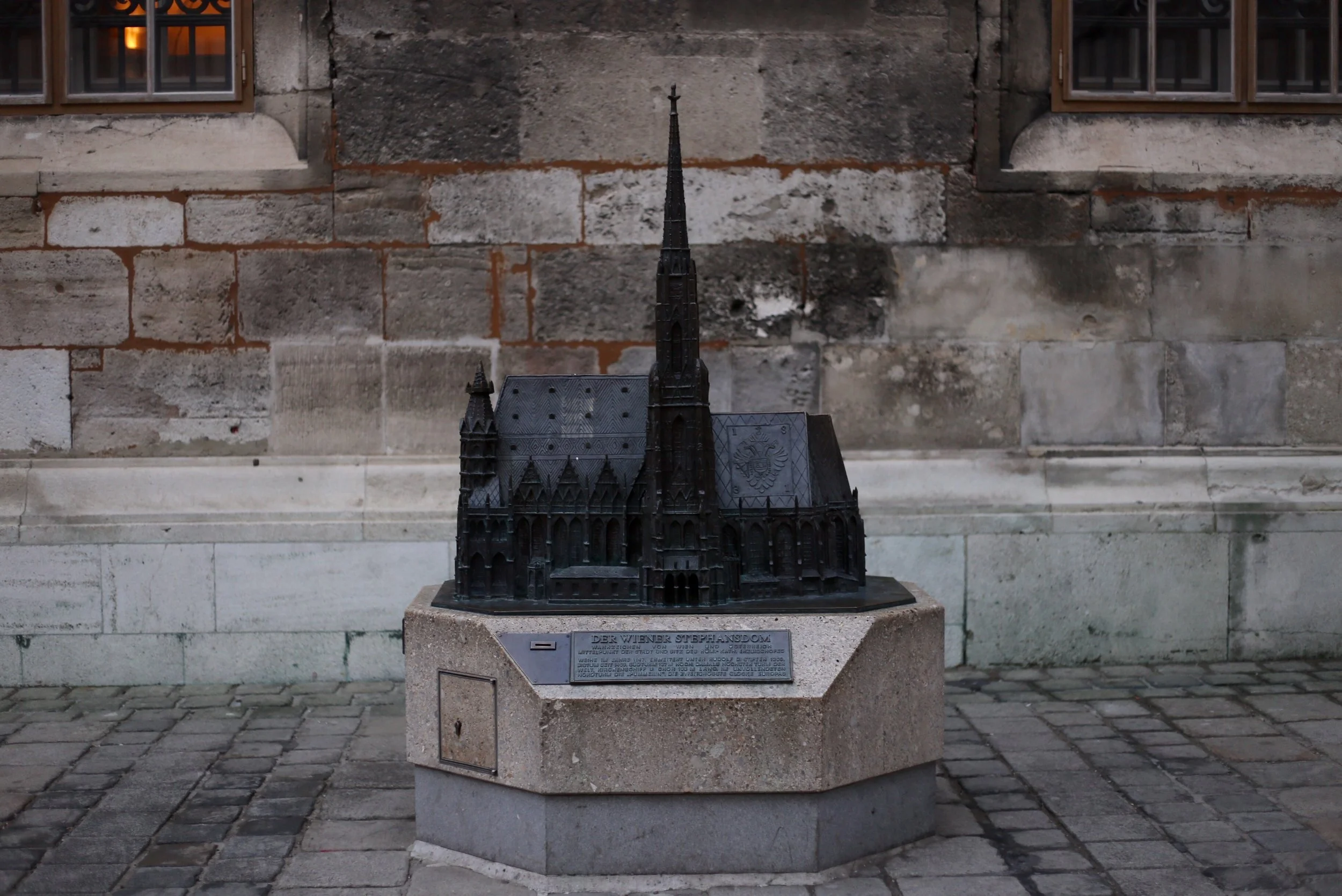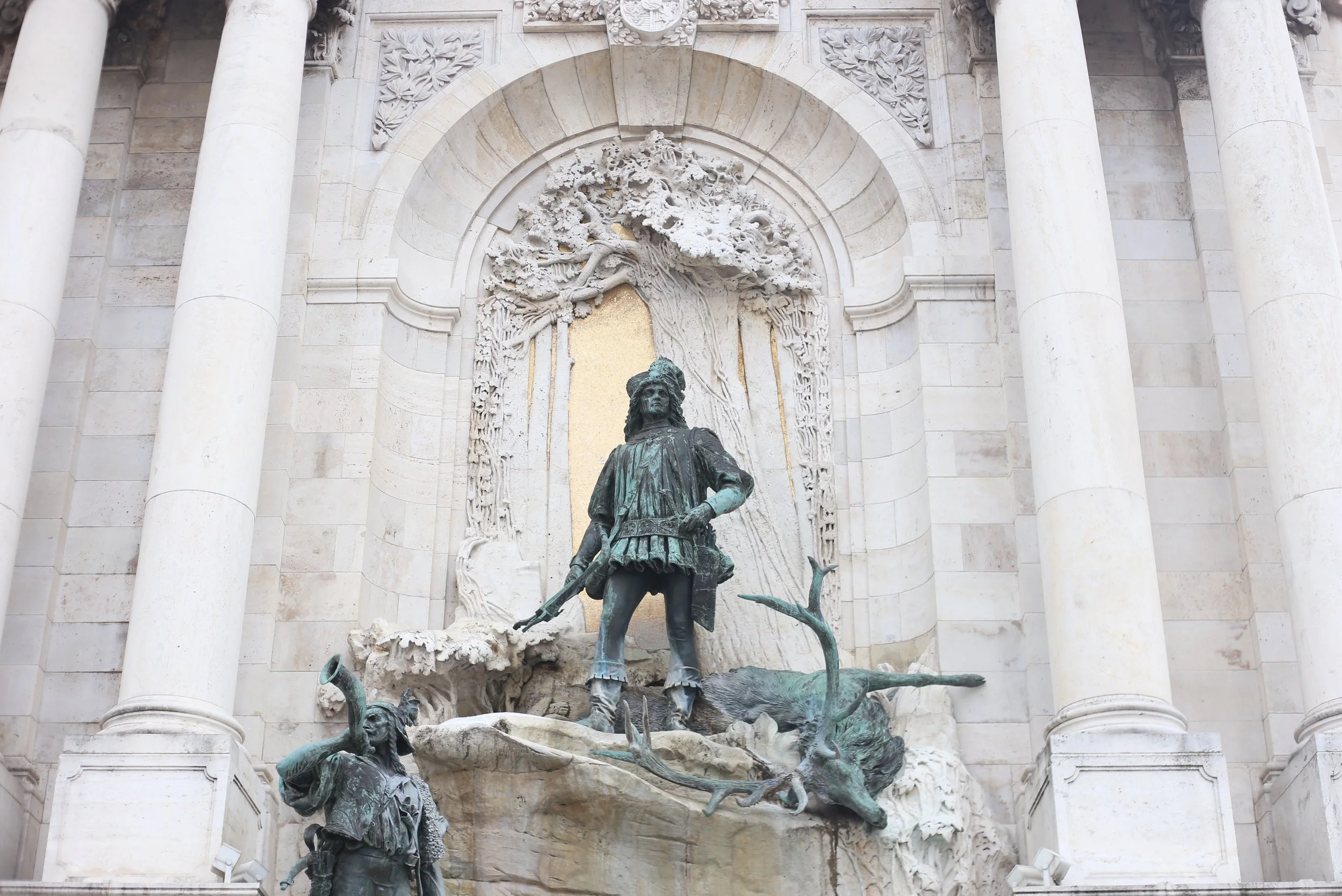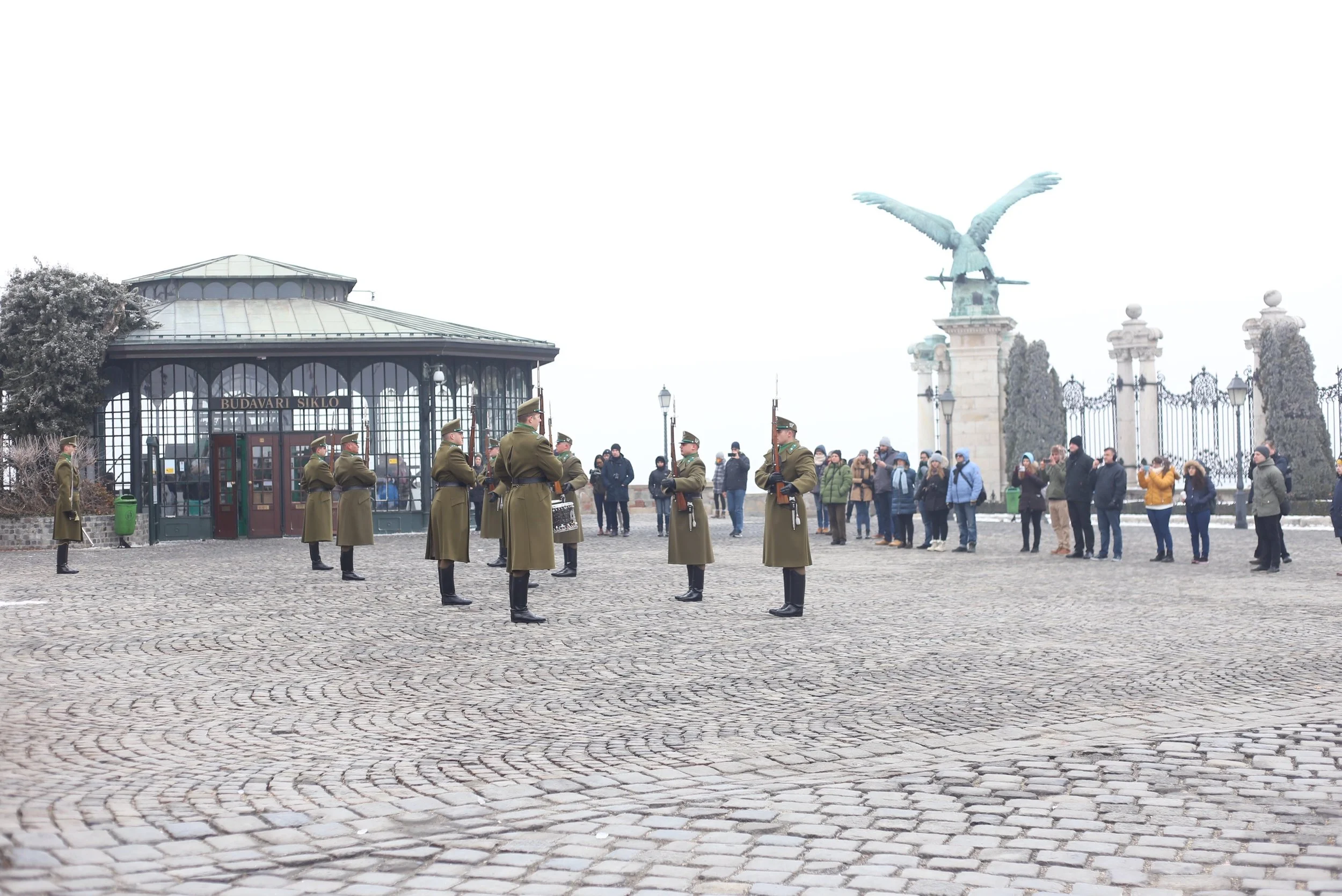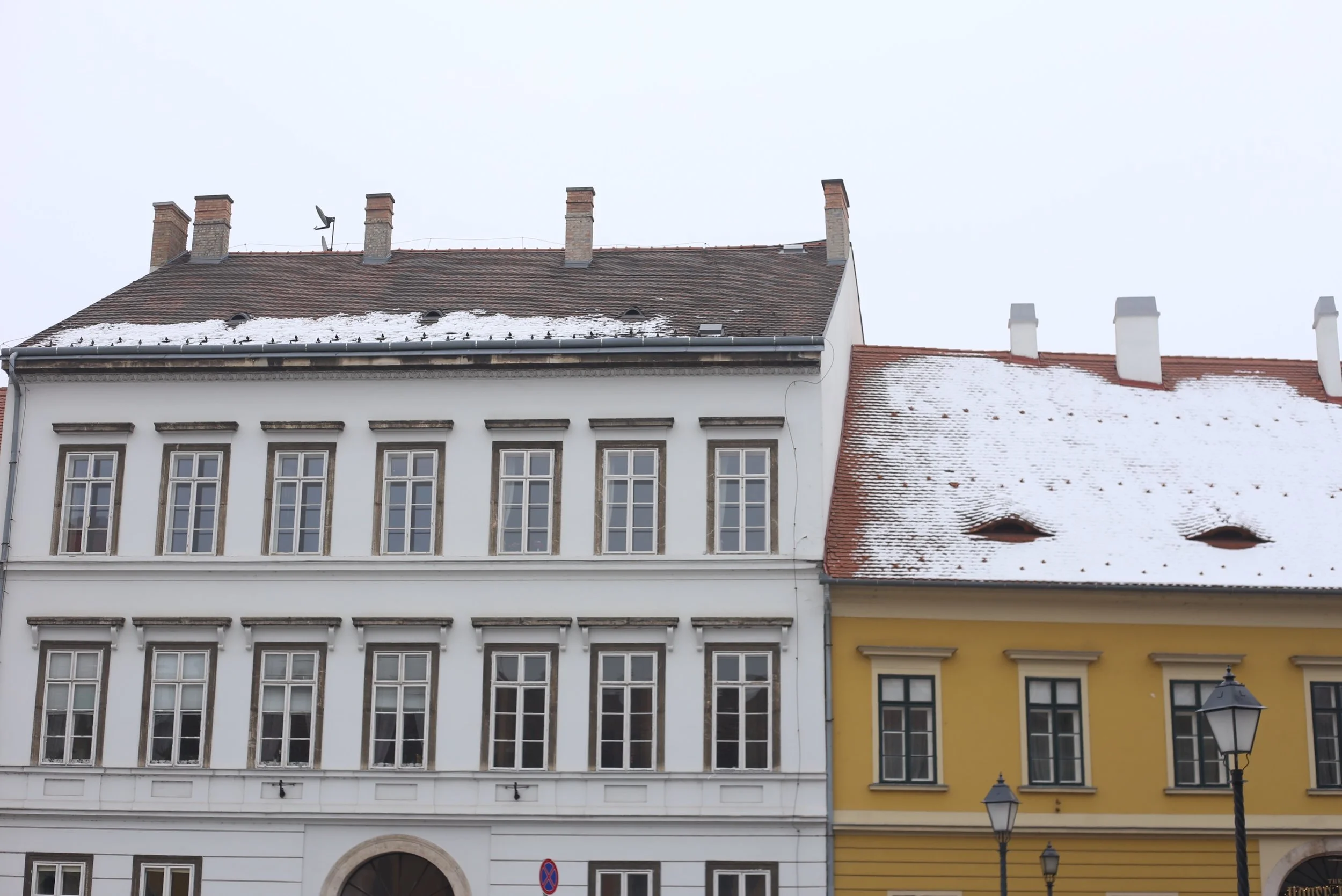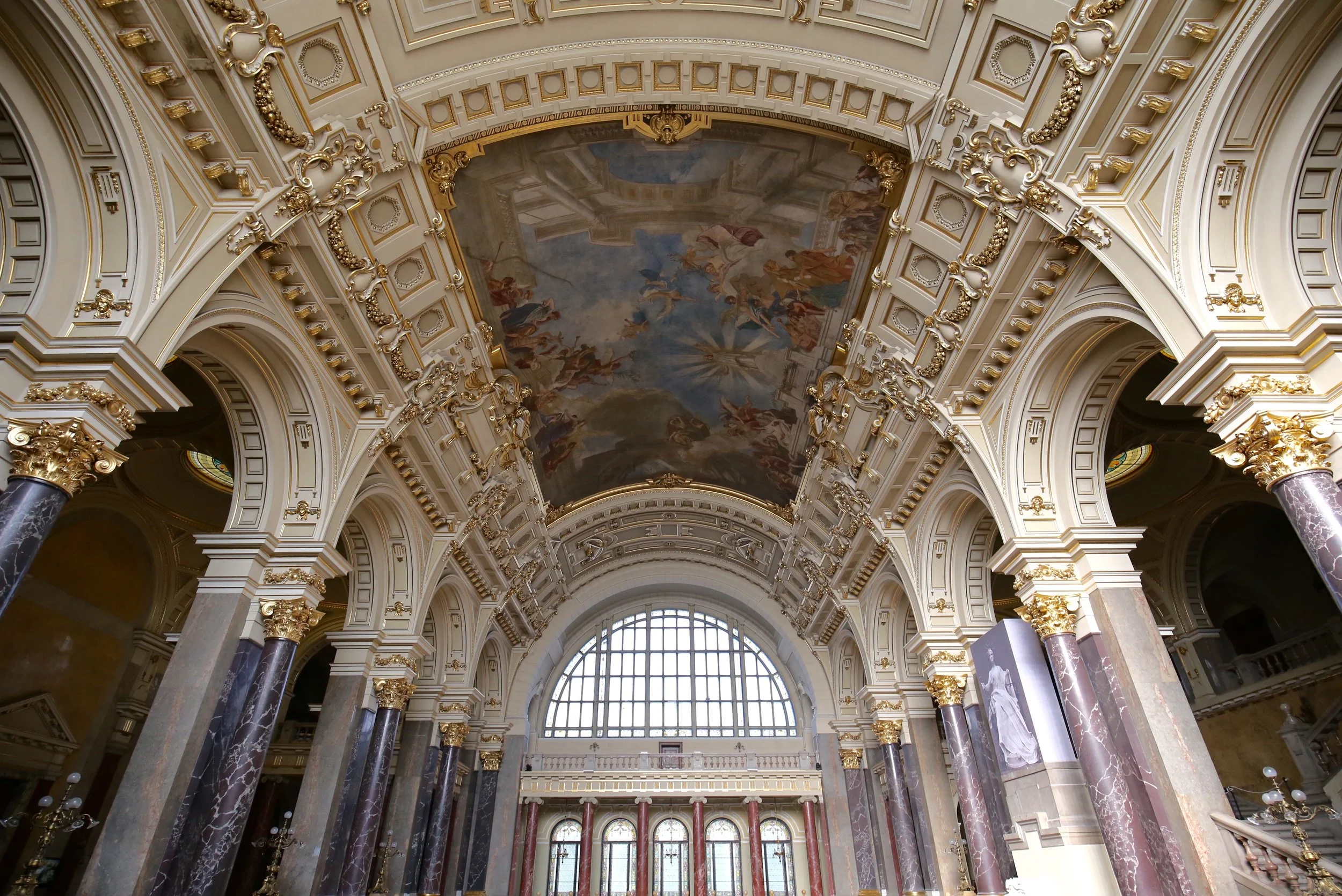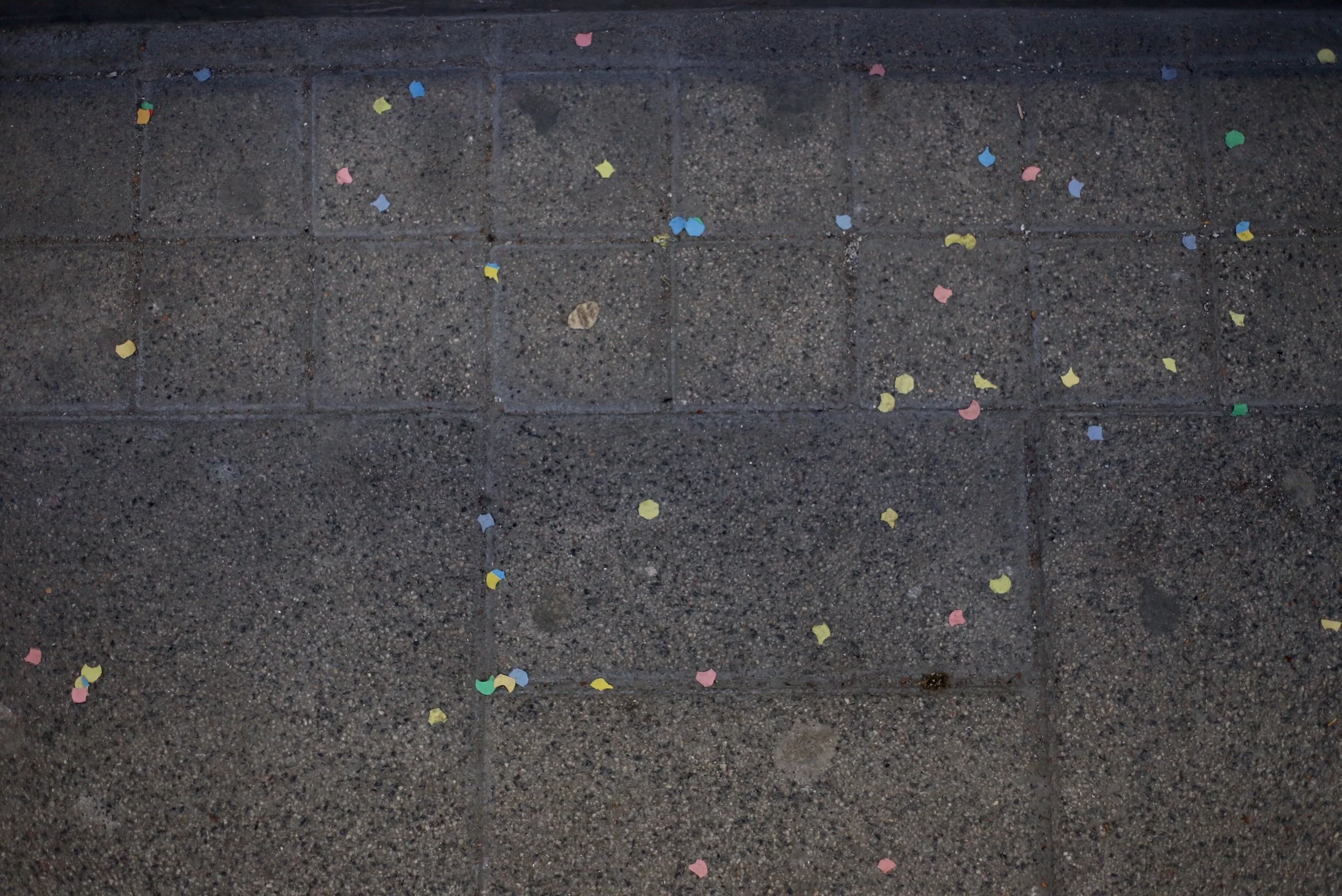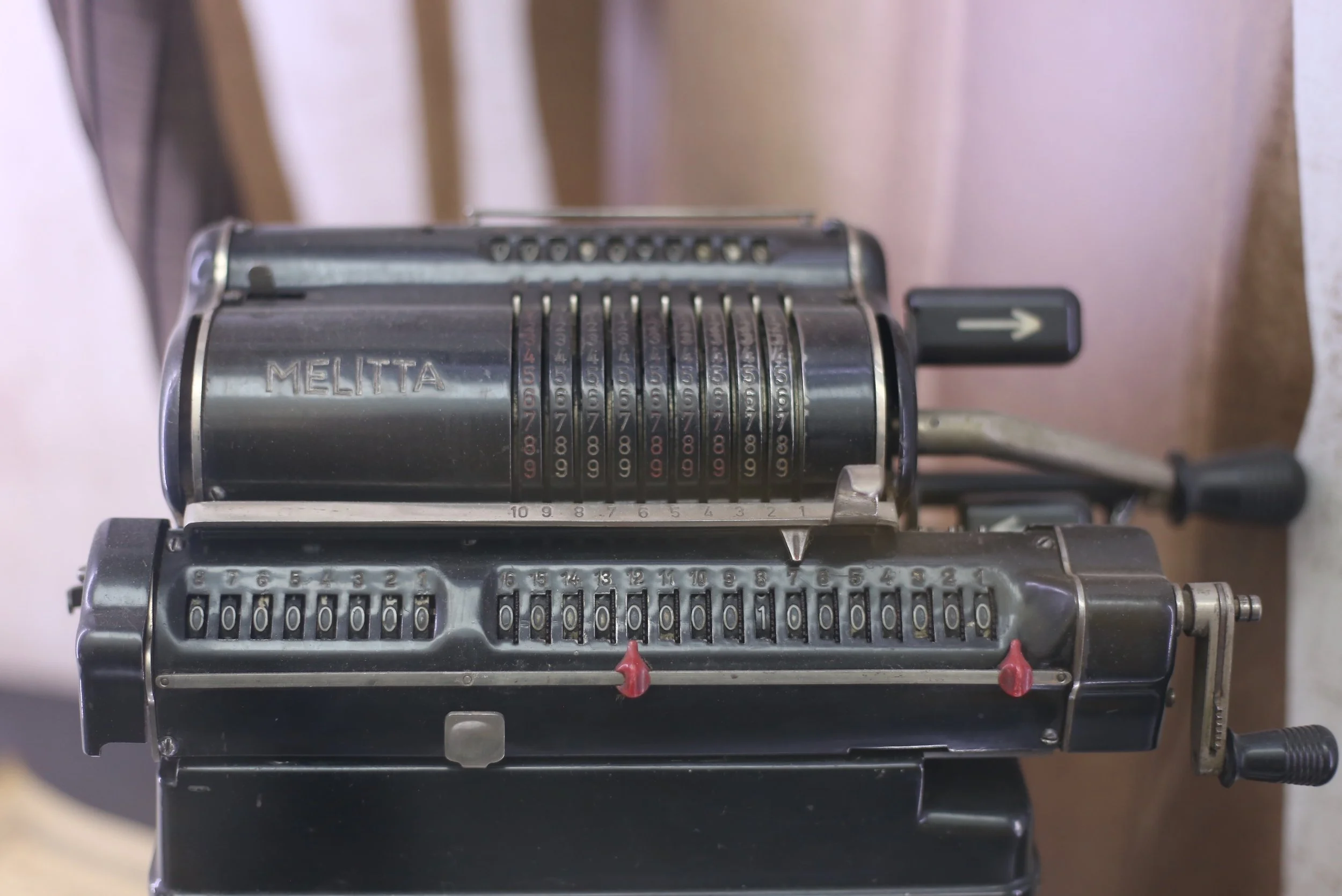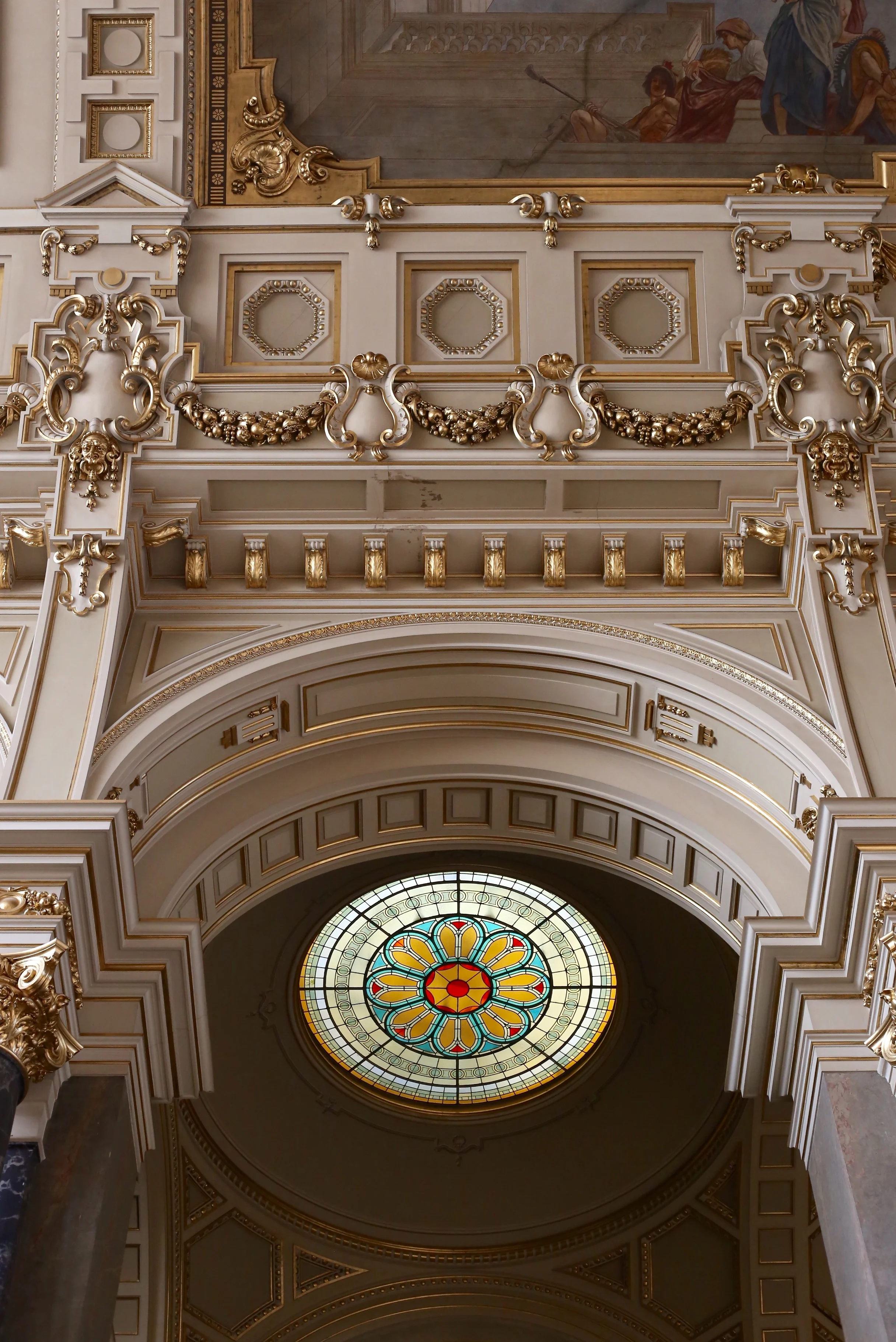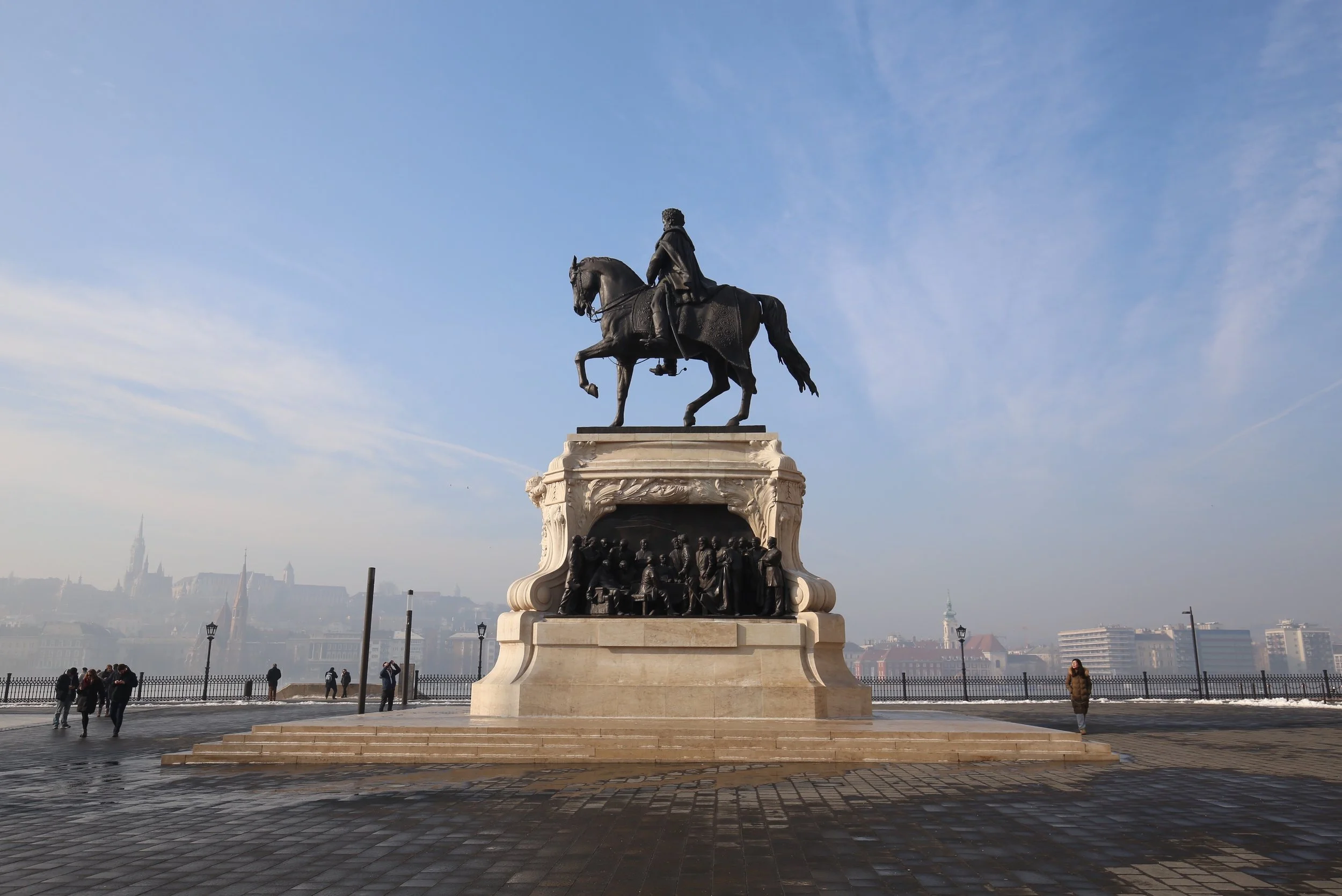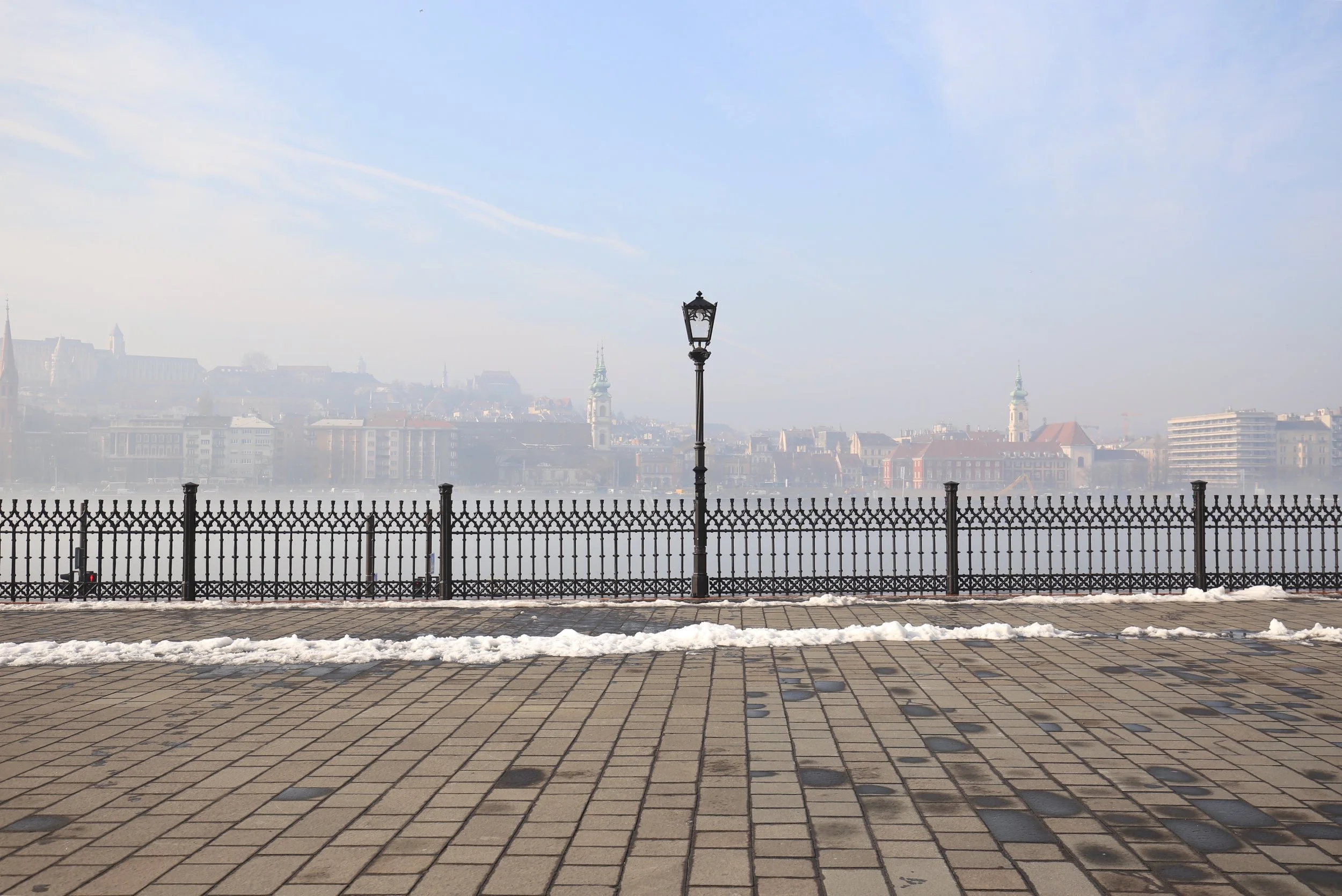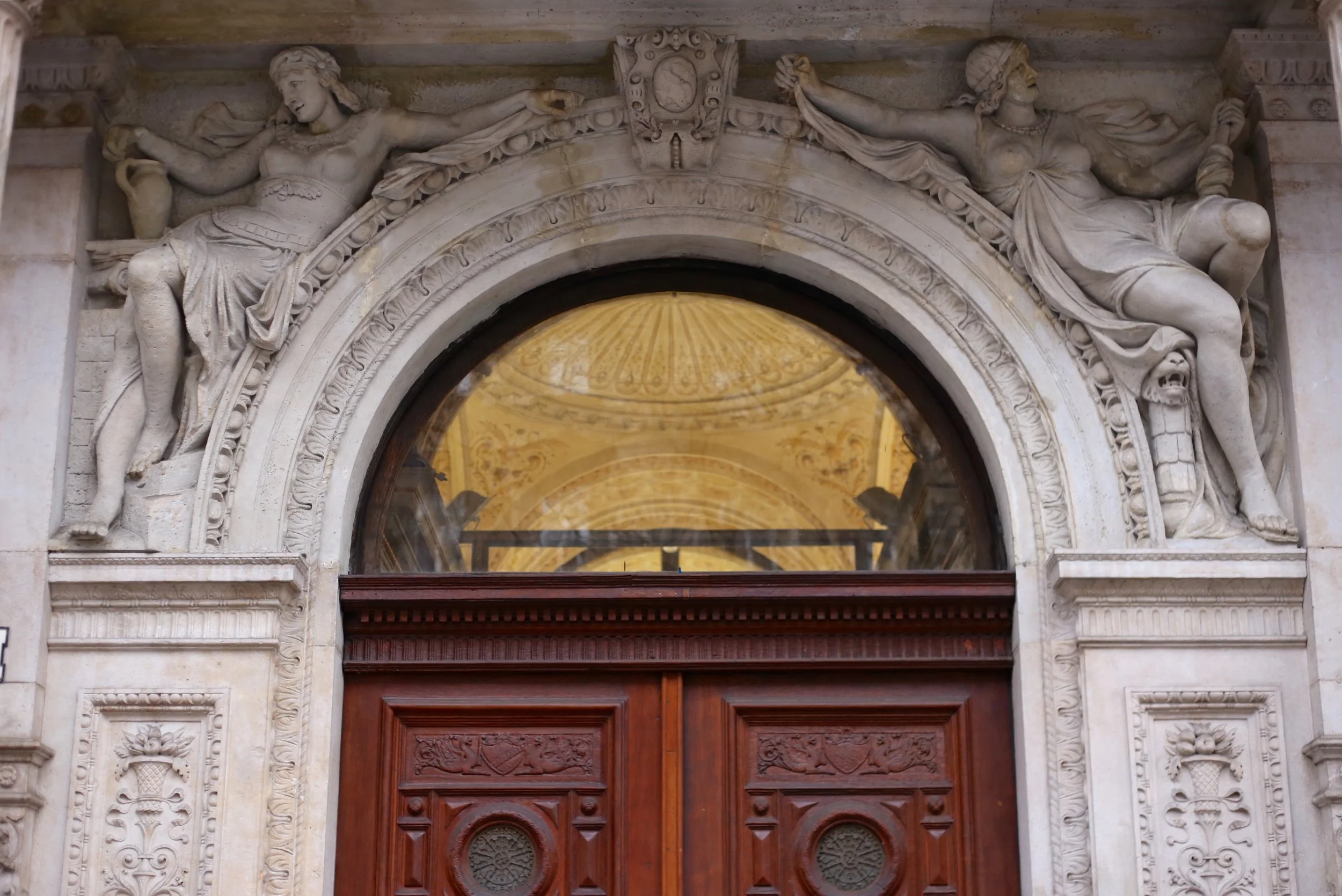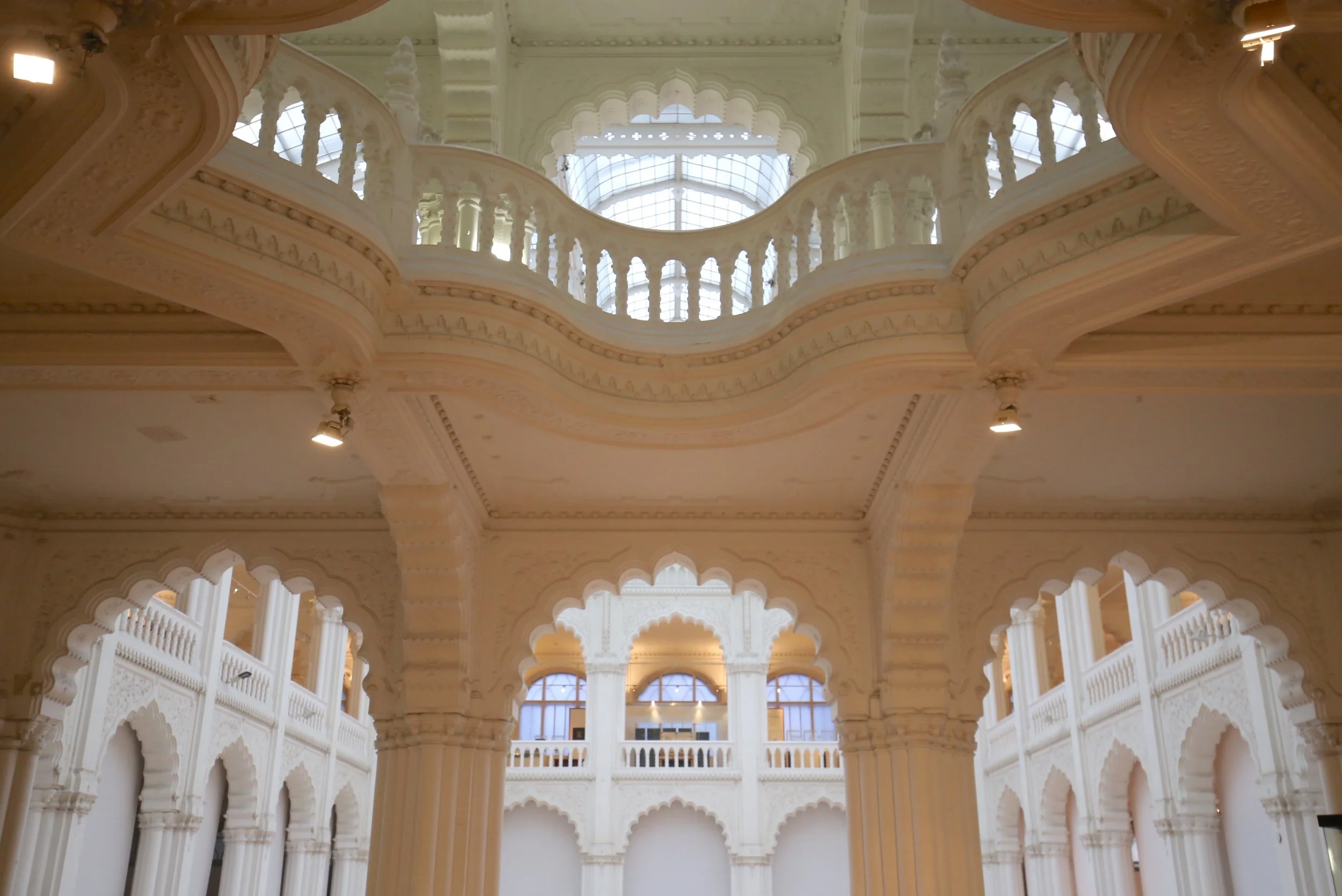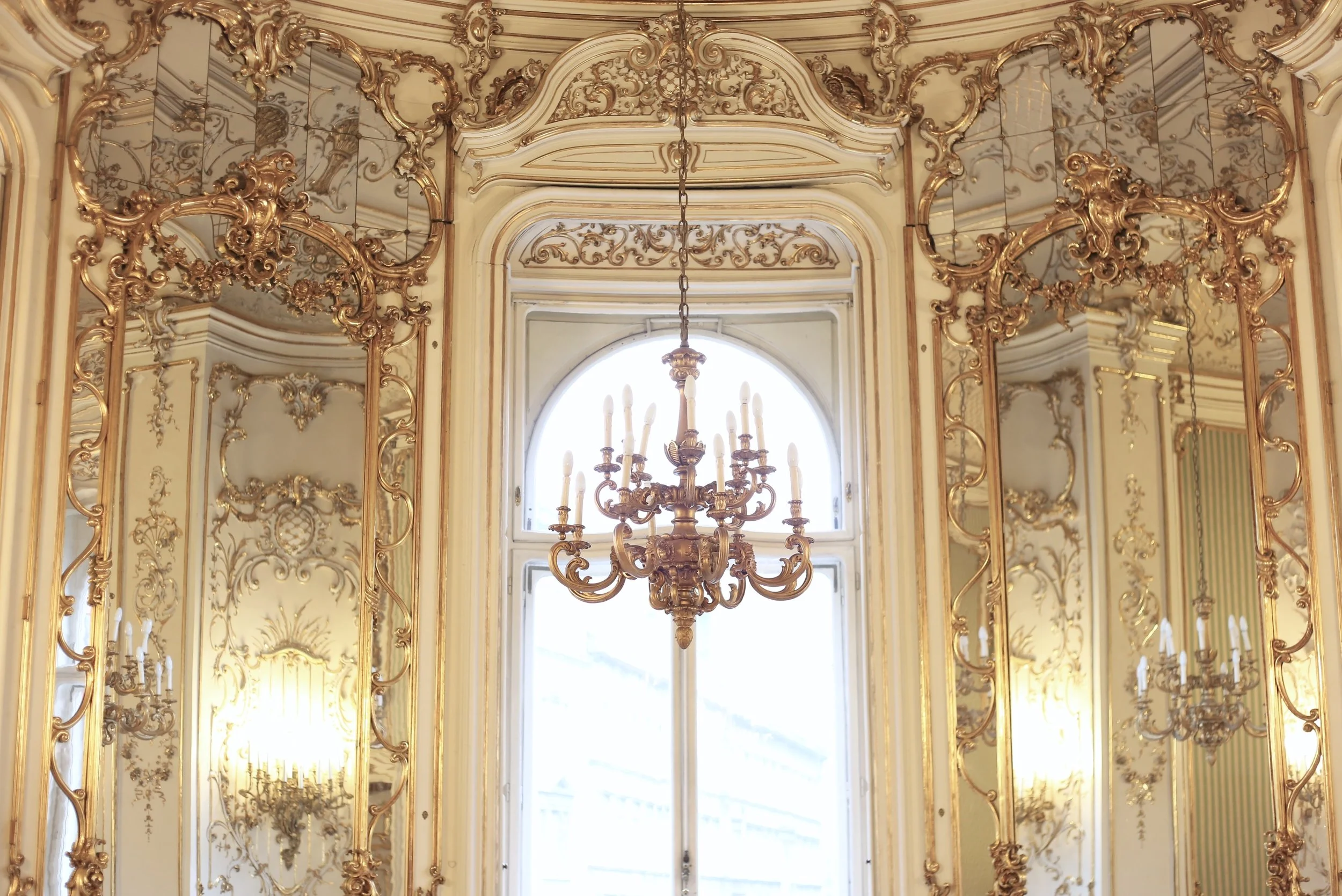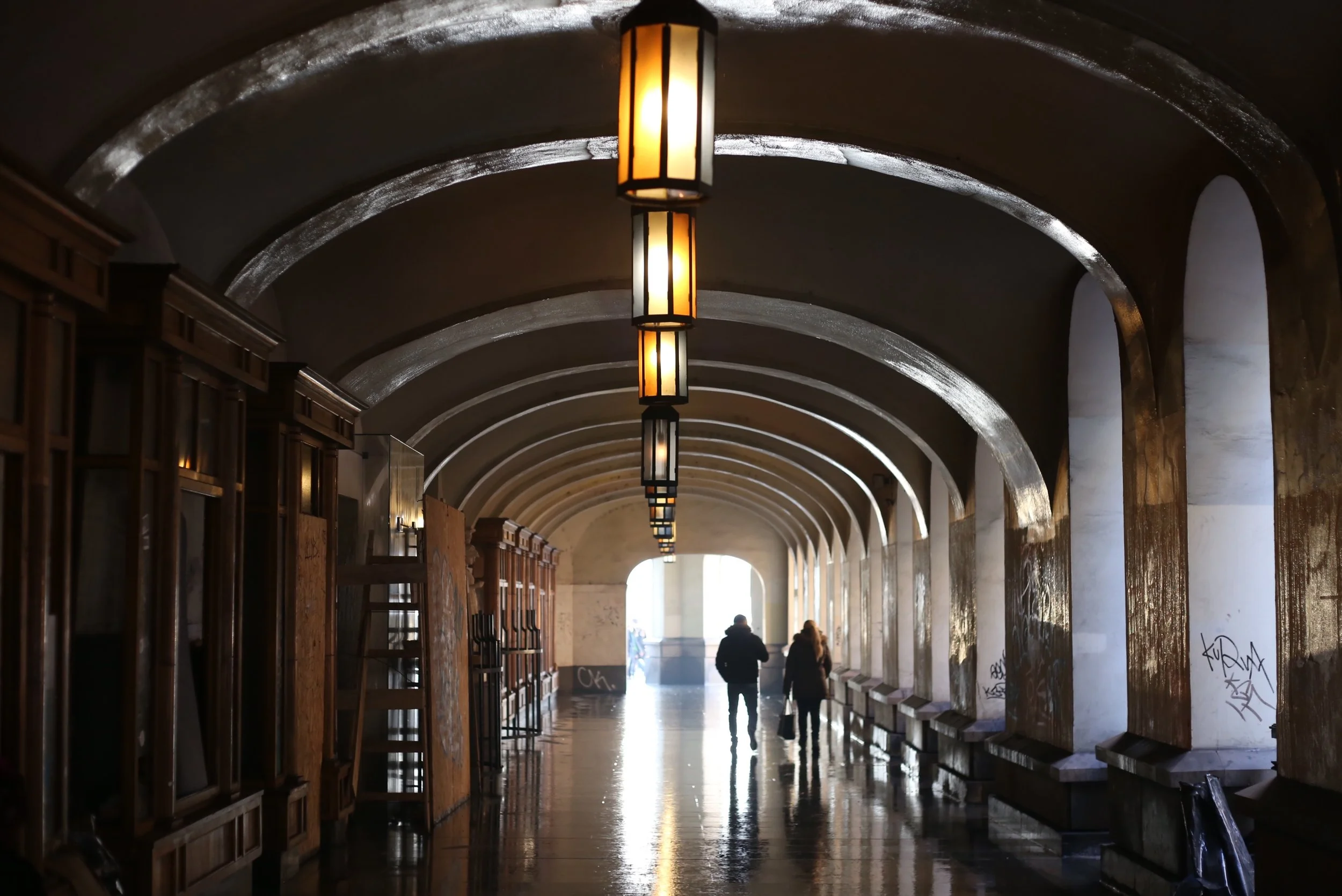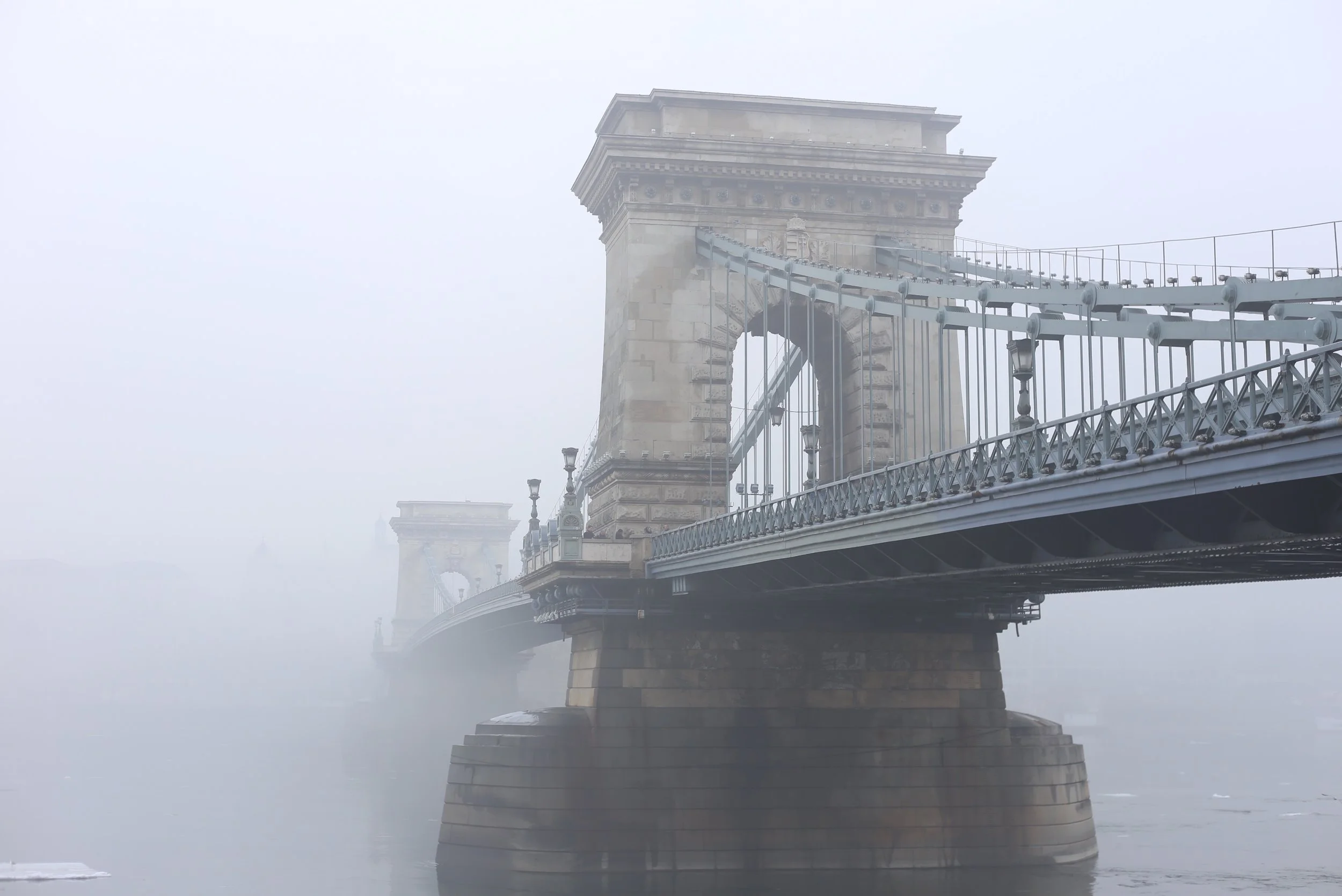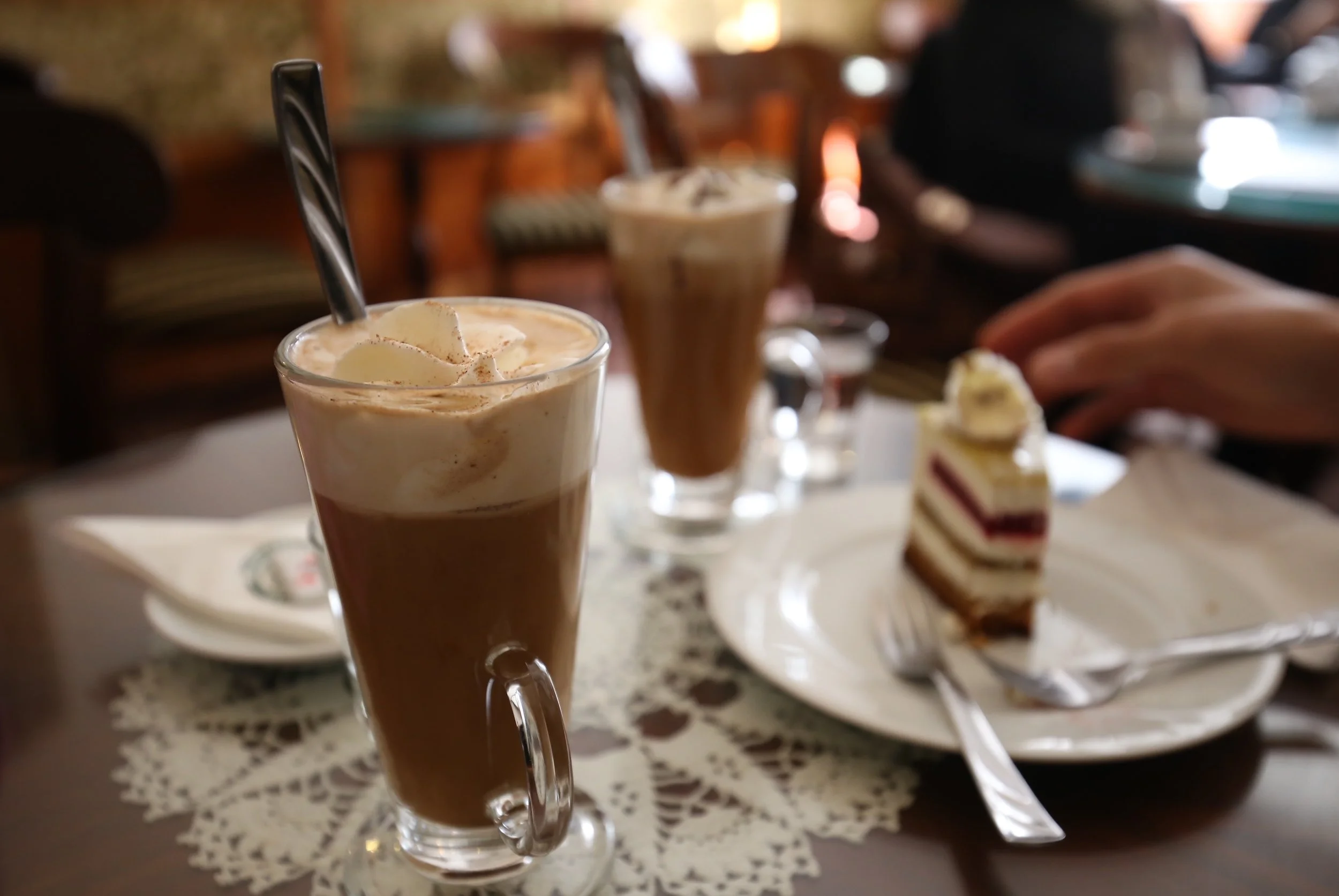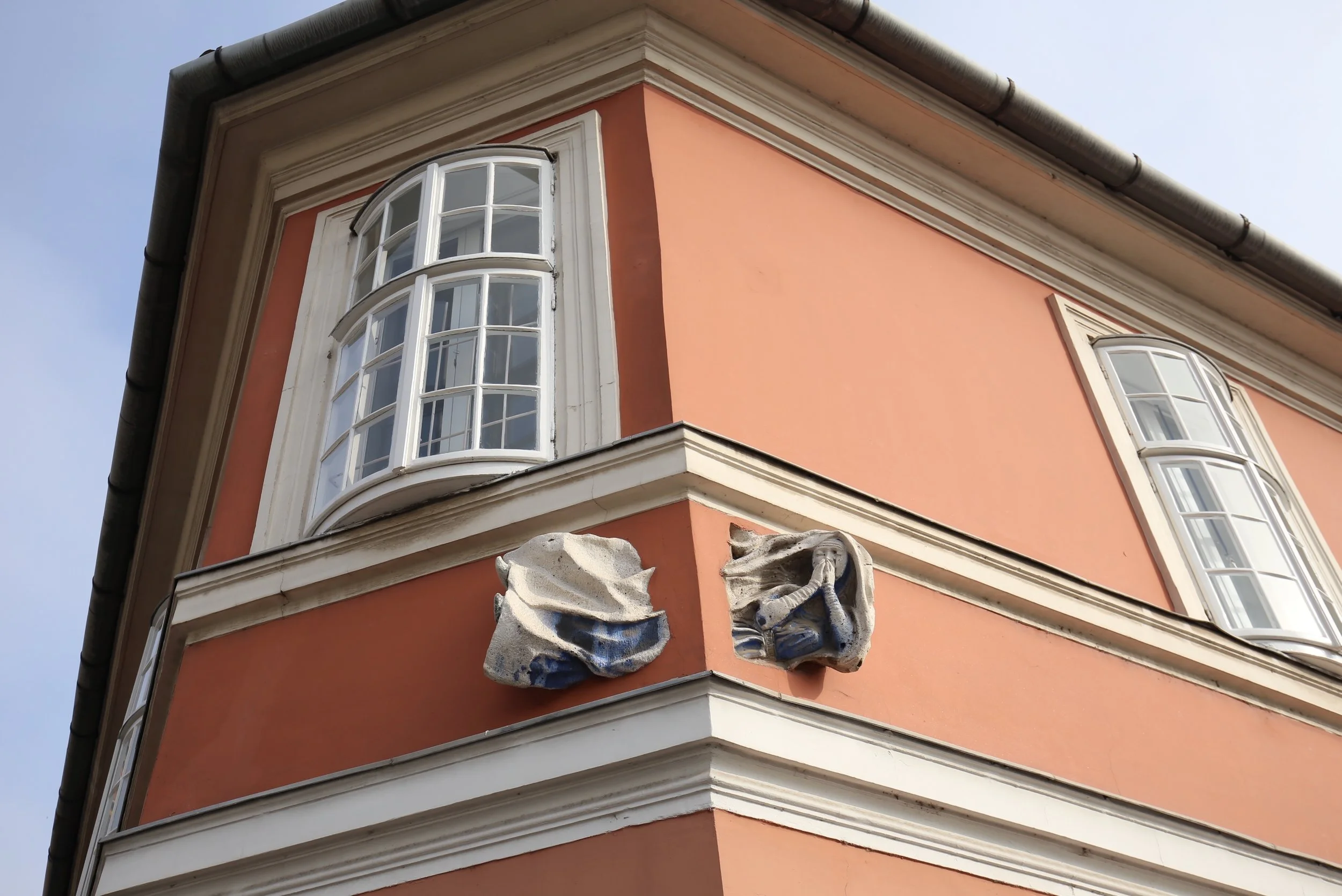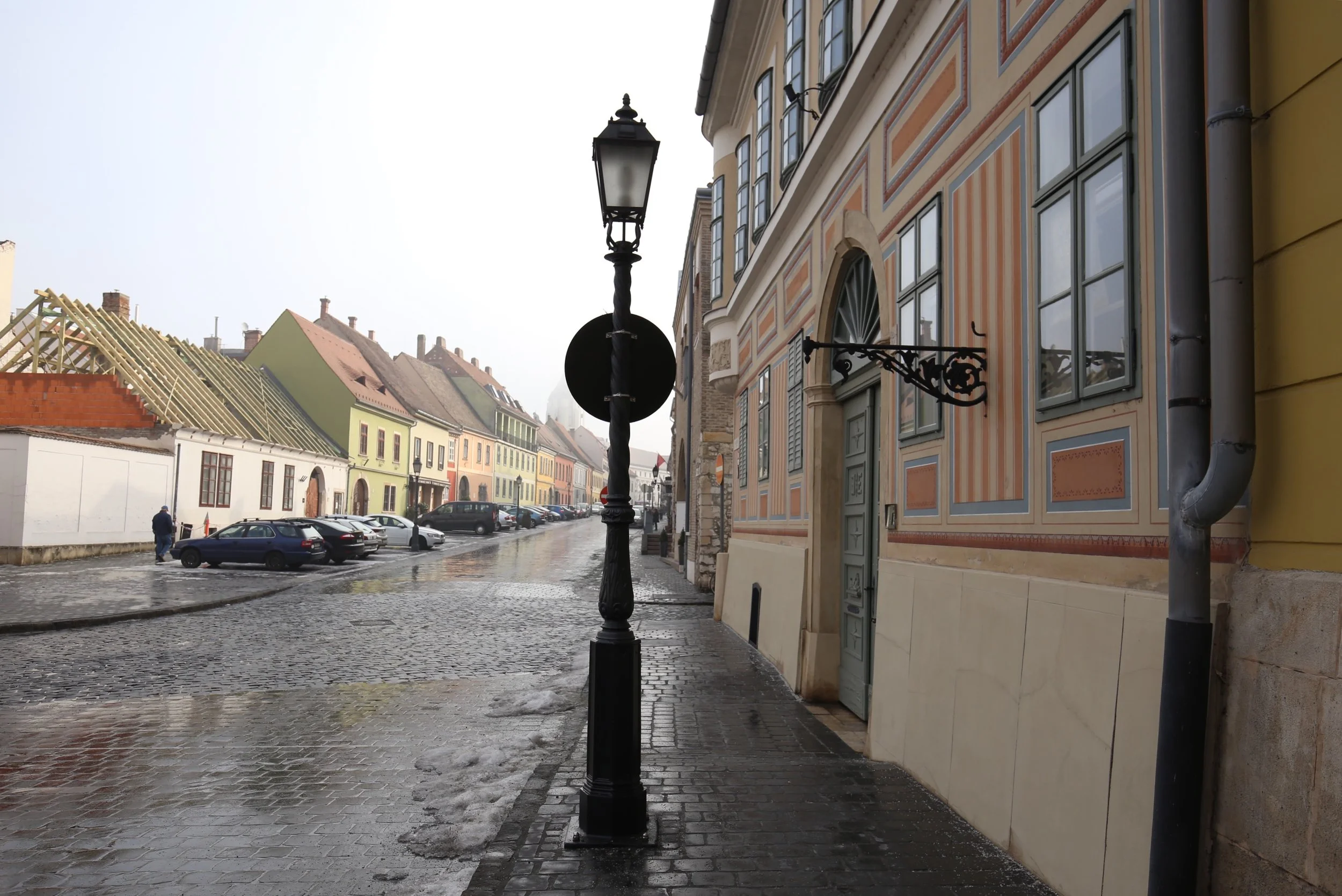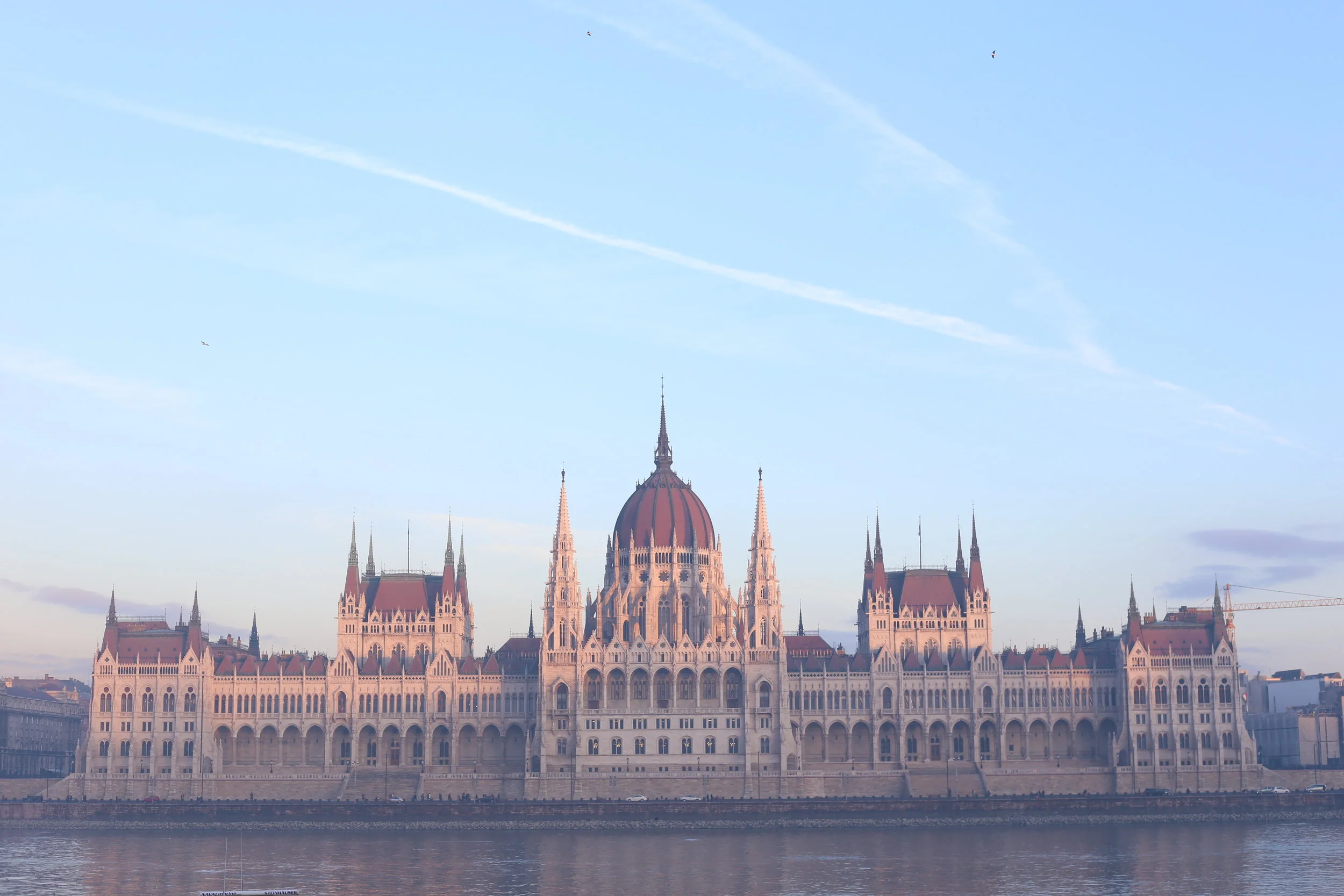MAGICAL REALISM
noun | ˈmajək(ə)l - ˈrē(ə)ˌlizəm
1. A genre - referring to literature, painting, film and art.
2. Expressing a primarily realistic view of the real world while also adding or revealing magical elements.
3. Sometimes called Fabulism, in reference to the conventions of fables, myths, and allegory.
“Magic realism is what happens when a highly detailed, realistic setting is invaded by something too strange to believe.”
When we arrived in Budapest, I knew then that I wanted to talk about Wes Anderson's world.
Watching a Wes Anderson film is like falling down the rabbit hole. Although his tales are set in our world, something seems to be amiss... or, perhaps it would be more correct to say that quite a few somethings were added.
In Wes's films:
- Children are like miniature adults, with just as many problems.
- Conversations reveal the character's true feelings.
- Electric Jellyfish are a thing.
- Pastel is huge.
- Suitcases are still monogrammed.
- The magic is especially strong in the details: from prison maps, to calling cards, from pastry boxes, to stamps, to antique pornography, to funny shaped birthmarks, it is all quite fabulous.
...
Budapest reminded me a lot of a Wes Anderson film, and not just any film, but his (quite perfectly named) Grand Budapest Hotel.
Although the Grand Budapest Hotel was nowhere near Budapest - being set in the fictitious land of Zubrowka, somewhere in Eastern Europe, and shot mainly in Germany - the entire film was actually uncannily similar to the beauty and old-world charm of Budapest.
To set the scene a little, for those who are lost, here is a shot from the movie:
The camera comes to a stop as it reveals a sprawling nineteenth-century hotel and baths situated on a snowy mountain top. There is a deep, formidable staircase up to a regal entrance. There is a promenade above and a glass-panelled conservatory below. A rickety funicular groans as it slowly climbs its hillside tracks. The grass needs cutting, the roof needs patching, and more or less every surface of the building needs another coat of pink paint.
Now, without further ado, I give you:
My Very Own Experience of Grand Budapest.
ZOE A. R. ECCLES
Explorer & Writer
⚜
January, 2017
Dear reader,
I have so much to share with you since the last time I wrote.
We arrived in Budapest last week, and although we only have one more week to explore this magnificent city, by the time we leave I am sure we shall feel as if we have lived here for many years. It is at once familiar, and strange, like something from a recurring dream.
Let me explain a little more. Picture, if you will, this resplendent old city...
Split by a river - that same Danube that winds it way through many of my tales - on one side we can see Buda with its hill crowned by the castle and by a church whose roof is of coloured tiles. The hill is steep, wound about with paths that are lit at night by the old black lamps. Cutting through all this are the funicular lines. The funicular itself, like a vision from some long-passed time of noble grandeur, goes up and down, up and down, it's ascent noted by the sound of a shrill bell. On the other side of the river, the Pest side, the land lays flat, going out for miles past the old Synagogue and the Jewish quarter. On the very banks of the river sits a jewel, sparkling at sunset - the Parliament buildings. And there we are, zoom in a bit and you will see two little people, dwarfed by that giant masterpiece of gothic spires, gazing upwards, mouths agape.
We have rented a small room in the apartments of an elderly gentleman named Tibor.
Let us now imagine Tibor... A wrinkled face, always smiling, his smile shows greying teeth and brings a sparkle into his blue eyes. He is of no notable stature, neither tall nor short, but holds himself well - a consequence of his habit of running ten kilometres each morning in the company of his grown-up daughter. He knows how to read and speak English, but has yet to learn how to hear it, and thus our conversations are slightly one sided. Each morning he greets us calmly with:
"Good morning, enjoy your meal."
Breakfast at his place is included, and he shows his generosity by providing Oliver with the most meat I have ever seen on a breakfast plate. I, being vegetarian, get yogurt and fruit and eggs, which is more to my preference. Tibor seems to have his own breakfast of cake and tea at the small pastry shop across the road, where he chats with the owner and the other patrons. Tibor lives on the top floor of a large and very square apartment block on the edge of the city center. The city center, as it turns out, is a very large one, as it takes twenty minutes by bus and tram to get to the middle...
Once in the middle, however, the scenery changes. The buildings become more flamboyant, bedecked with tiles and crumbling curls of stone - each one an eccentric in respect to his neighbours. If I had to describe their styling in one phrase it would be "hodge podge" - as the various centuries of occupation and fleeting fashions has left every possible mark on this city, which sprung up when the Romans settled on the hills of Buda and then said "we will go no further."
Everyday, we don our winter jackets and board the tram. Then, the quaint and rickety little tram brings us into some new part of the city, then we take off on foot, in search of adventures.
And oh! To see the fisherman's bastion, or the old bathhouses! All of it is so beautiful.
The other day we made a visit to a quaint little railway station, run almost exclusively by children. The children, dressed in uniform, walked about the station preparing the train for it's short journey. Some of them were held up in the lunch room, still working on a cup of tea and a biscuit. Naturally, I found this whole scene quite fascinating!
However, nothing can compare to the glory that is the bath houses. I must have visited at least five different establishments so far, and each one holds its own unique charm. My favourites are the grand old baths inside the walls of the Gellért Hotel. They are spacious, tiled and filled with pillars leading up to a large, conservatory-style glass ceiling. The way that place echoes! You should hear it. It is such a ruckus in the main room, what with the synchronised swimming, and the gossiping old ladies, who are stripped of all their finery, instead sporting red swimming caps. In a more secluded section there are two greek baths and a smaller ice bath. Oliver discovered that last one, to his great delight. Ever since we visited Iceland he has not stopped talking about the ice baths.
Then there are the many hours spent in libraries - old ones with wooden bookcases reaching to great heights. Oliver is reading Bram Stoker's Dracula with lightning speed, while I write in the borders of my battered copy of Thoreau's Walden. The pages are coming unstuck and fall out every once in a while, but I love the book anyway.
Every afternoon is spent this way: reading in some old, gilt-detailed library, before braving the cold to walk across town to our now-favourite bar. It is only a tiny hole-in-the-wall shop selling craft beers, where the owner pours out our selections, and the patrons sit in squishy leather couches. These evenings always inevitably end with a visit to the best falafel shop on Earth.
“It is an extremely common mistake. People think the writer’s imagination is always at work, that he’s constantly inventing an endless supply of incidents and episodes; that he simply dreams up his stories out of thin air. In point of fact, the opposite is true. Once the public knows you’re a writer, they bring the characters and events to you. And as long as you maintain your ability to look, and to carefully listen, these stories will continue to seek you out, over your lifetime.”
~ THE AUTHOR”
a final note:
EXPECT MAGIC,
SEEK AND YOU SHALL FIND IT.
Magic and reality need not be entirely separate things.
Just as we have long thought that science and spirituality could not mix, it has been a part of the prevailing paradigm to eschew magic for reality, or vice versa. The two can, in fact, be synonymous.
There is a magic in this world that is so strong, so pervasive, that I have often thought it is sewn into the very fabric of our reality.
Reality itself is a funny thing, with blurry boundaries, extending into those realms we often call 'not-reality.'
For example, when I first thought of visiting Budapest, and Europe in general, it was only an idea, an imagining, something so flimsy it could have been swept away in an instant. Ideas are fleeting like this, just as dreams are, and thus we have often relegated them to the realms of the 'unreal,' as opposed to the more solid, less changeable realm of waking life.
And yet, the dream I once dreamed, of visiting Budapest... it leaped from the corners of my mind into my physical world.
Moreover, when I did finally visit Budapest in the physical, it seemed even more absurd and fabulous than the version of my dreams!
Magic is here, in everything we see, touch, feel and do.
Reality is less stable than we may think.
Both are integral to the fabric of this world.
☆
☆☆


